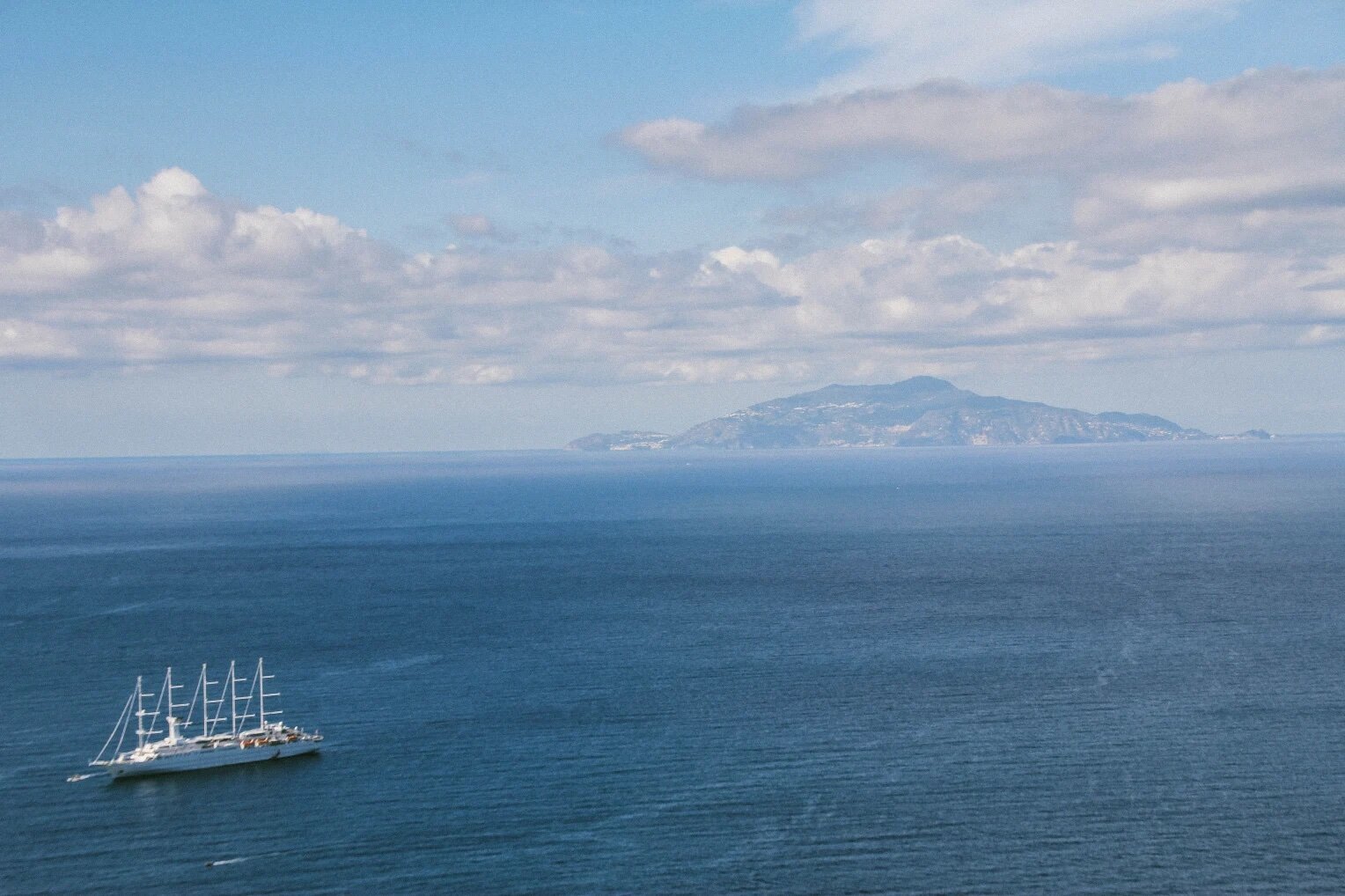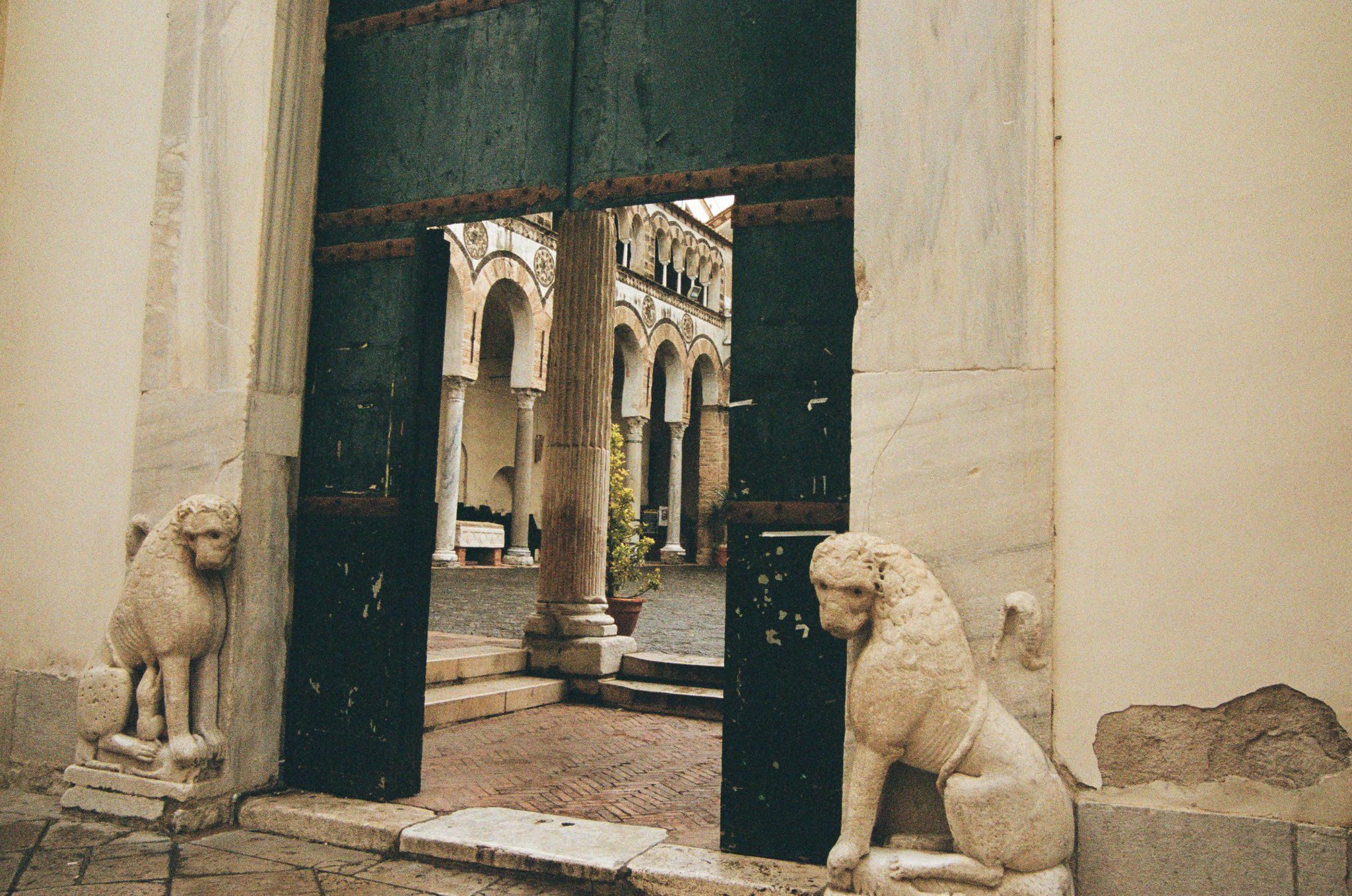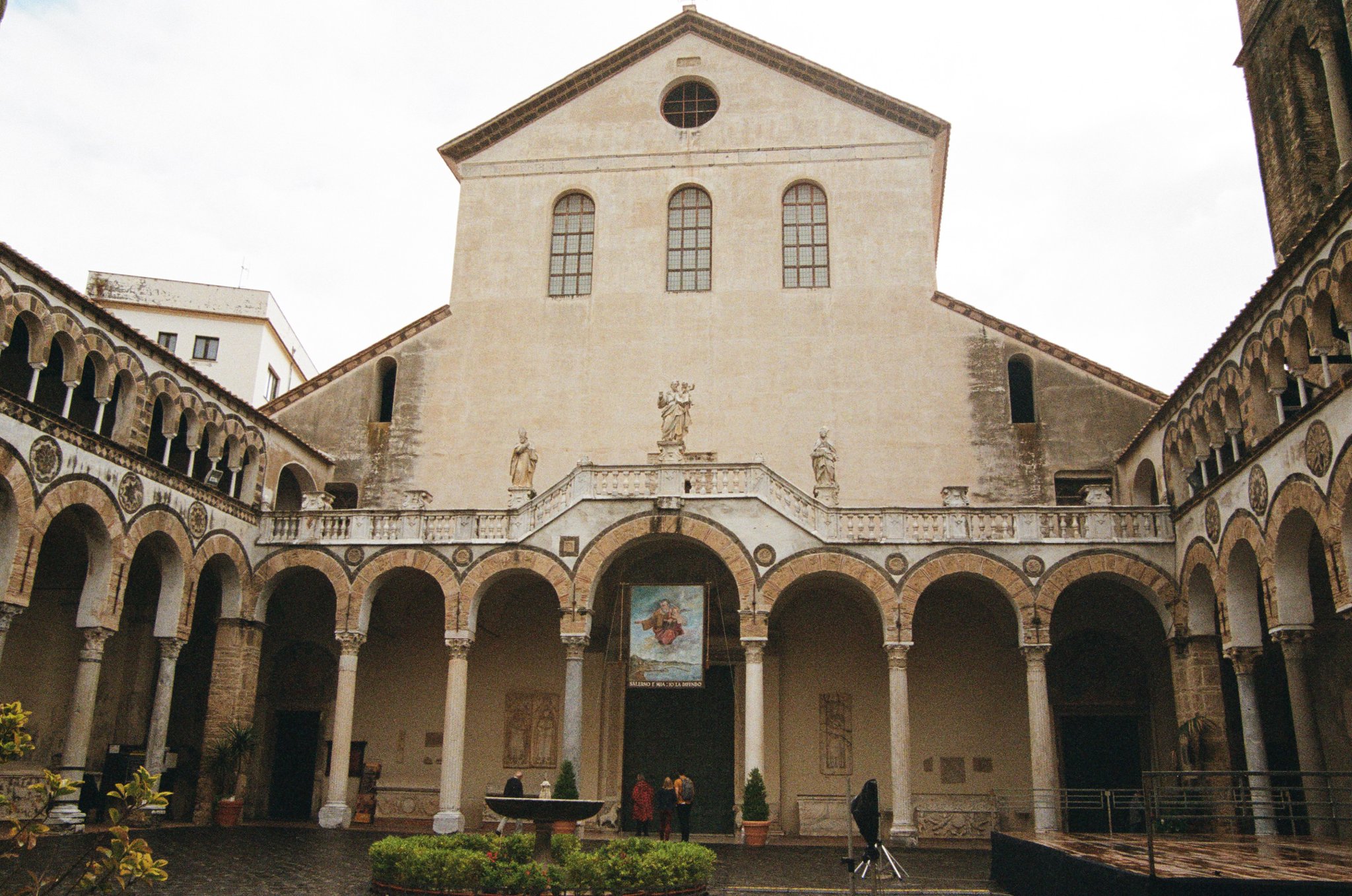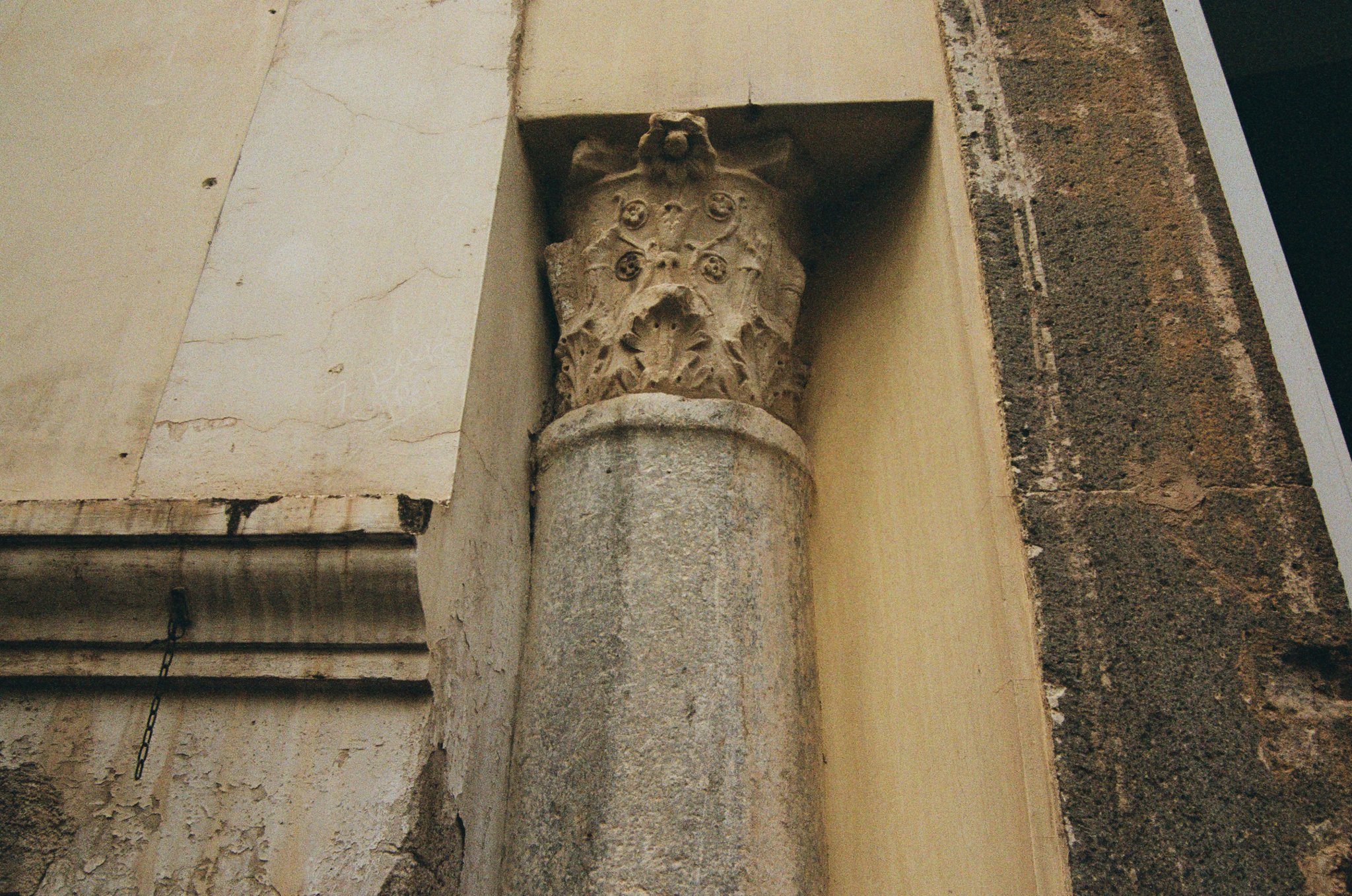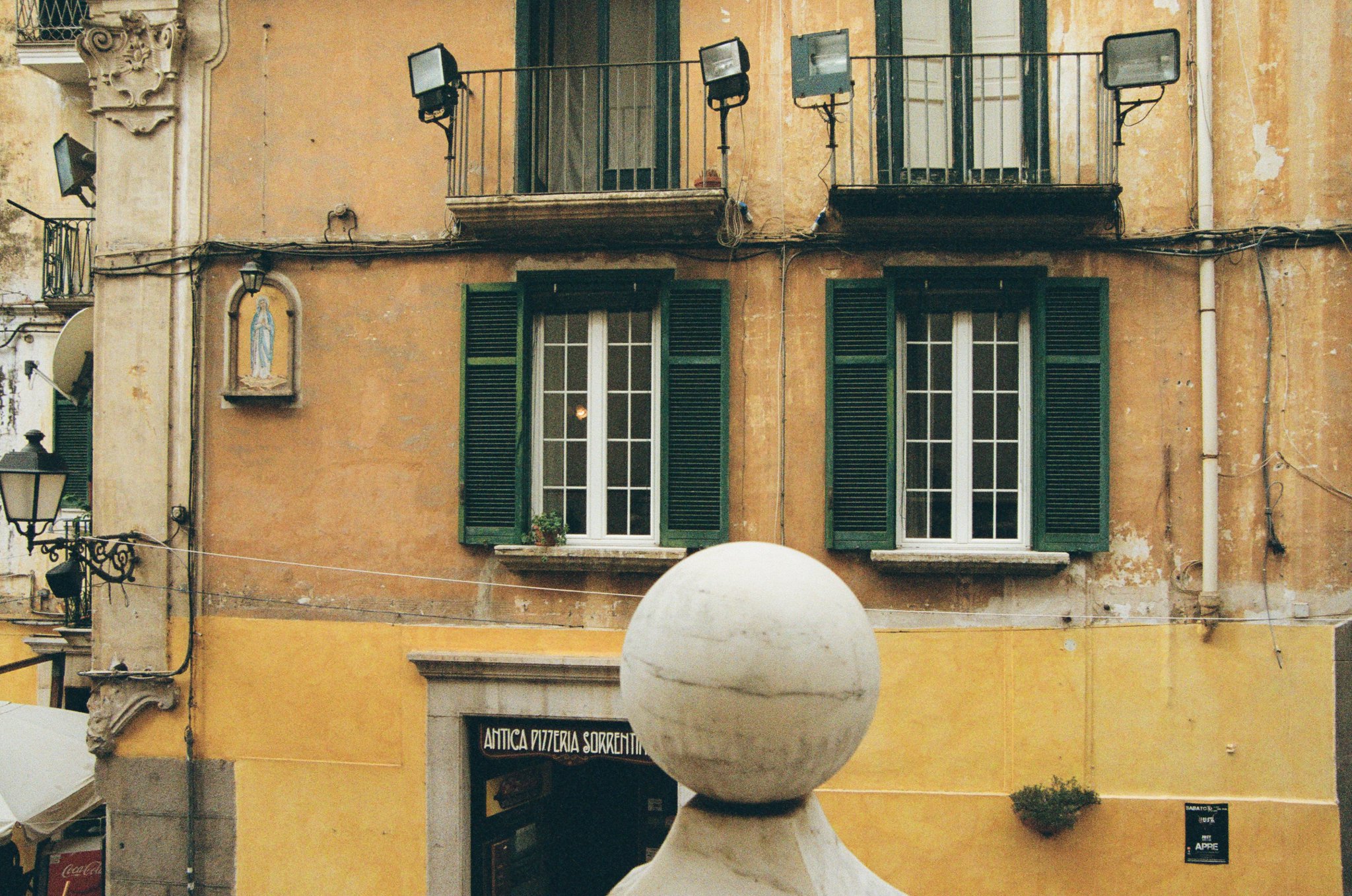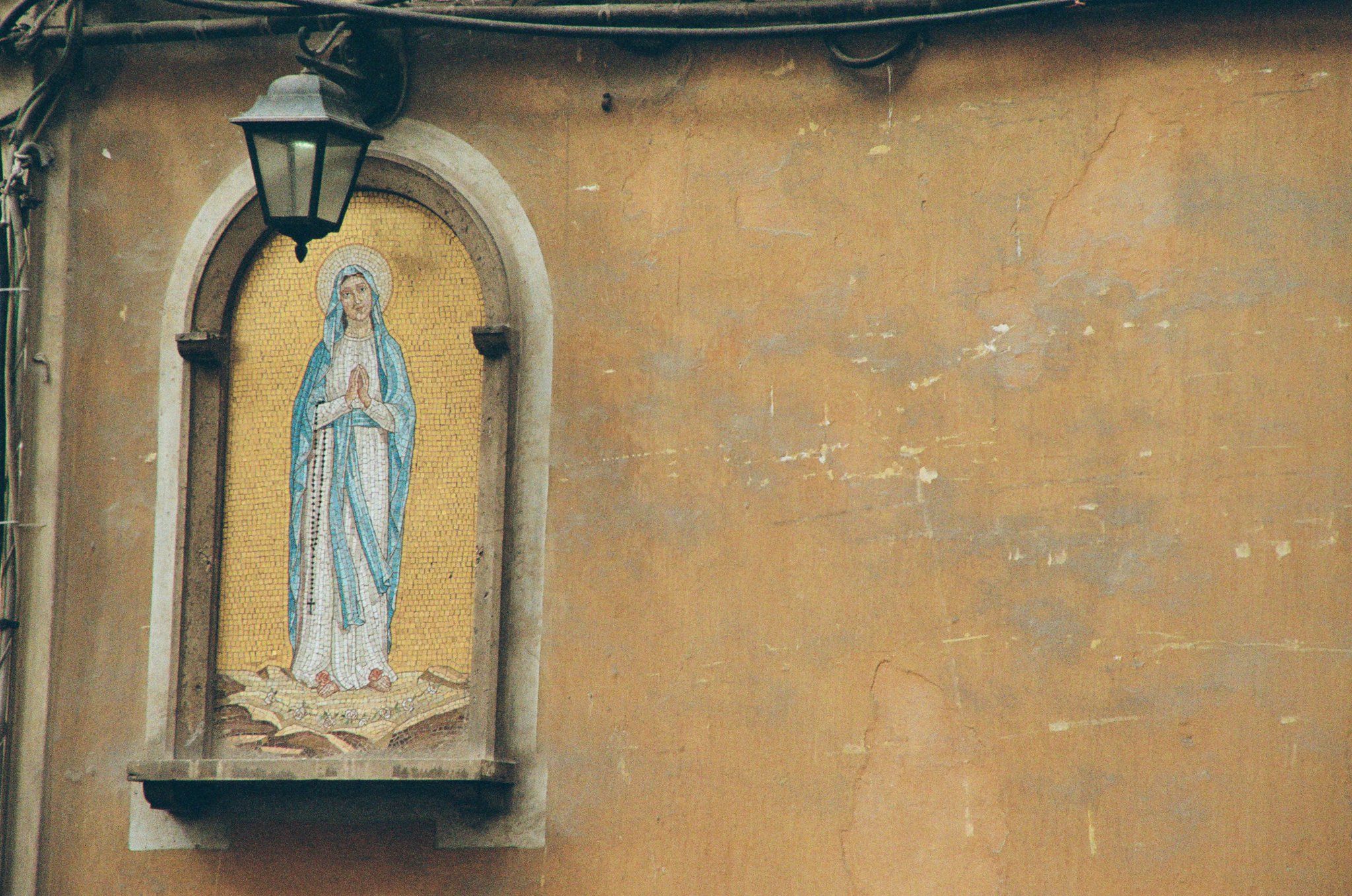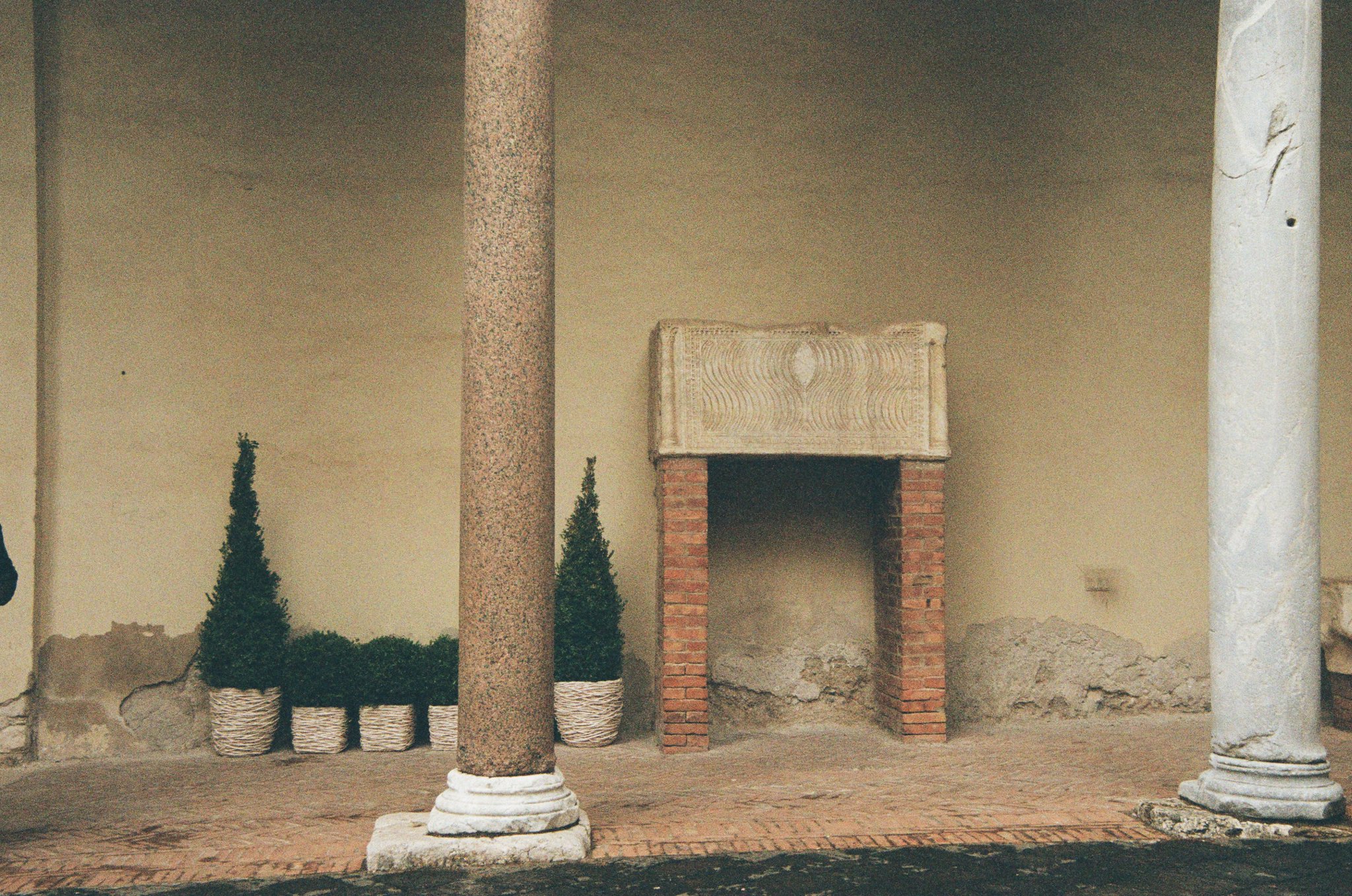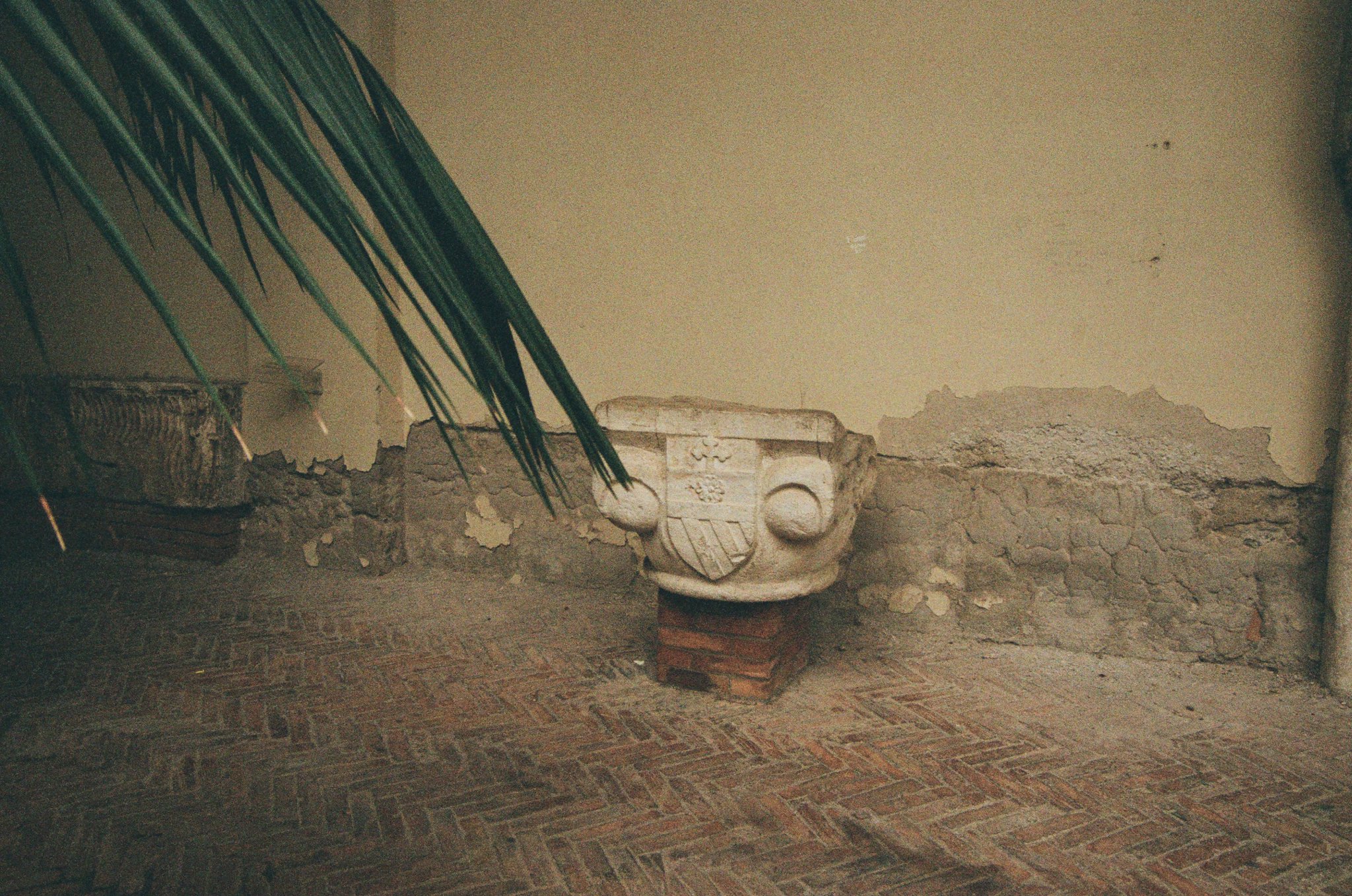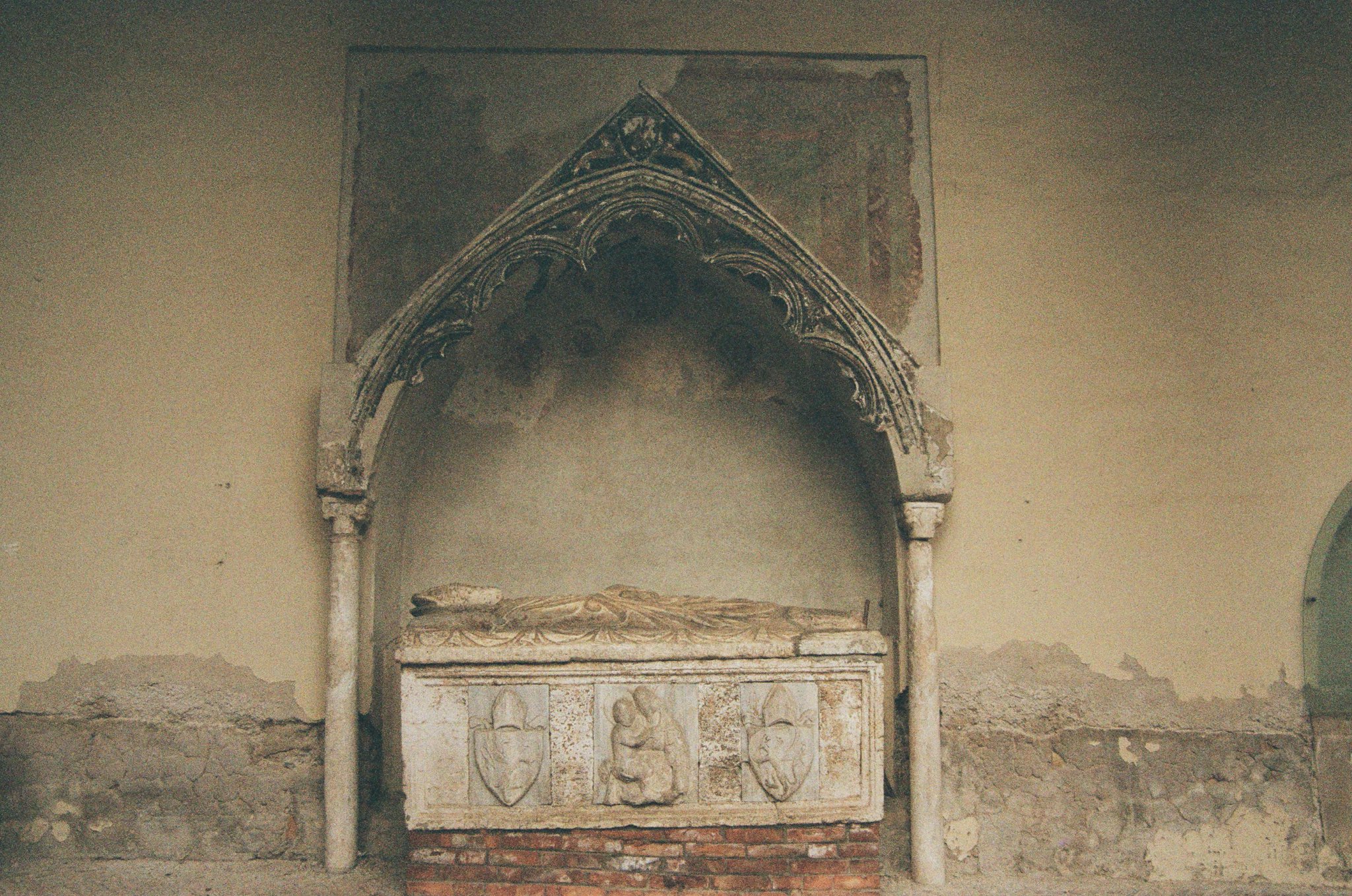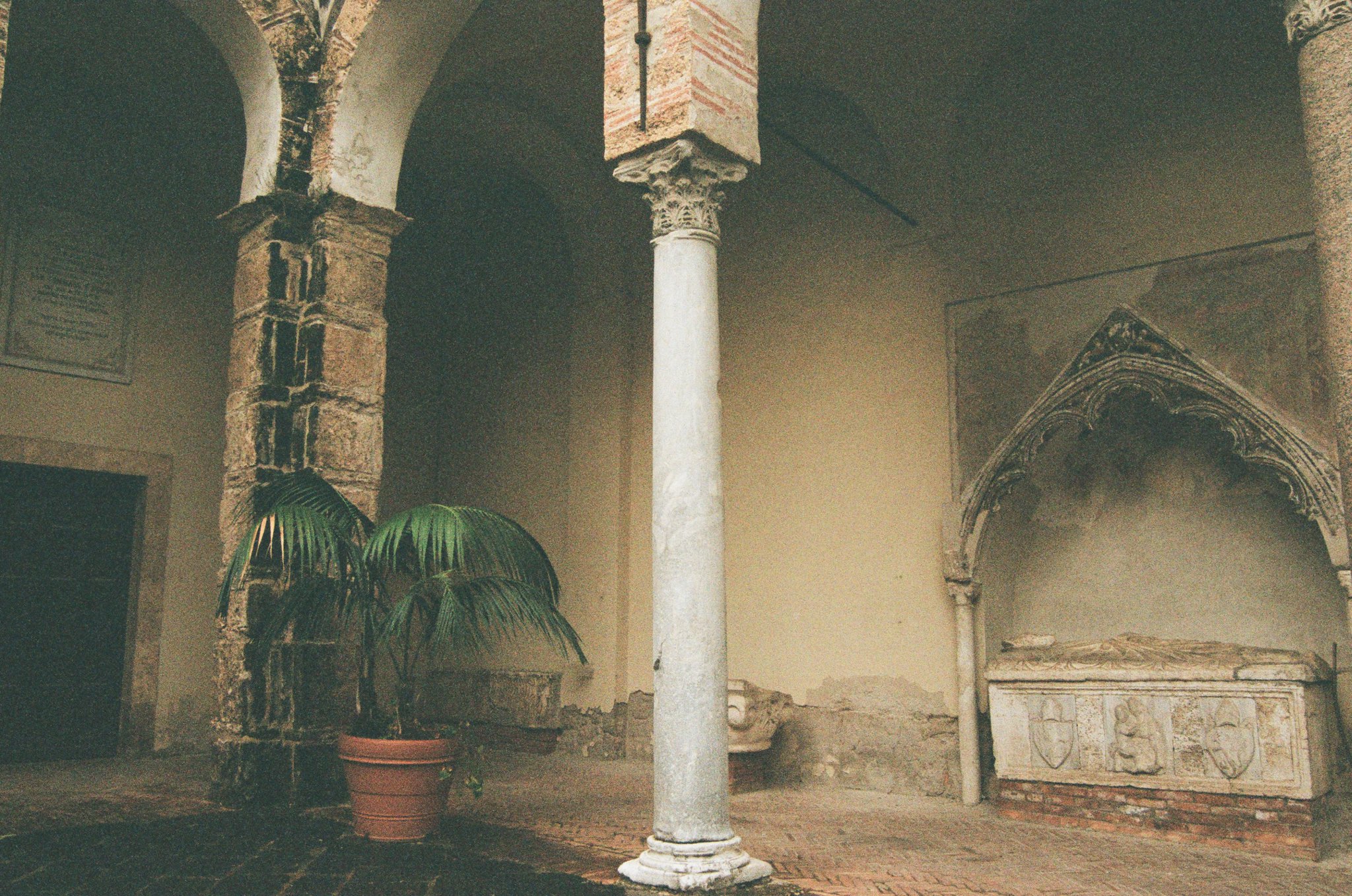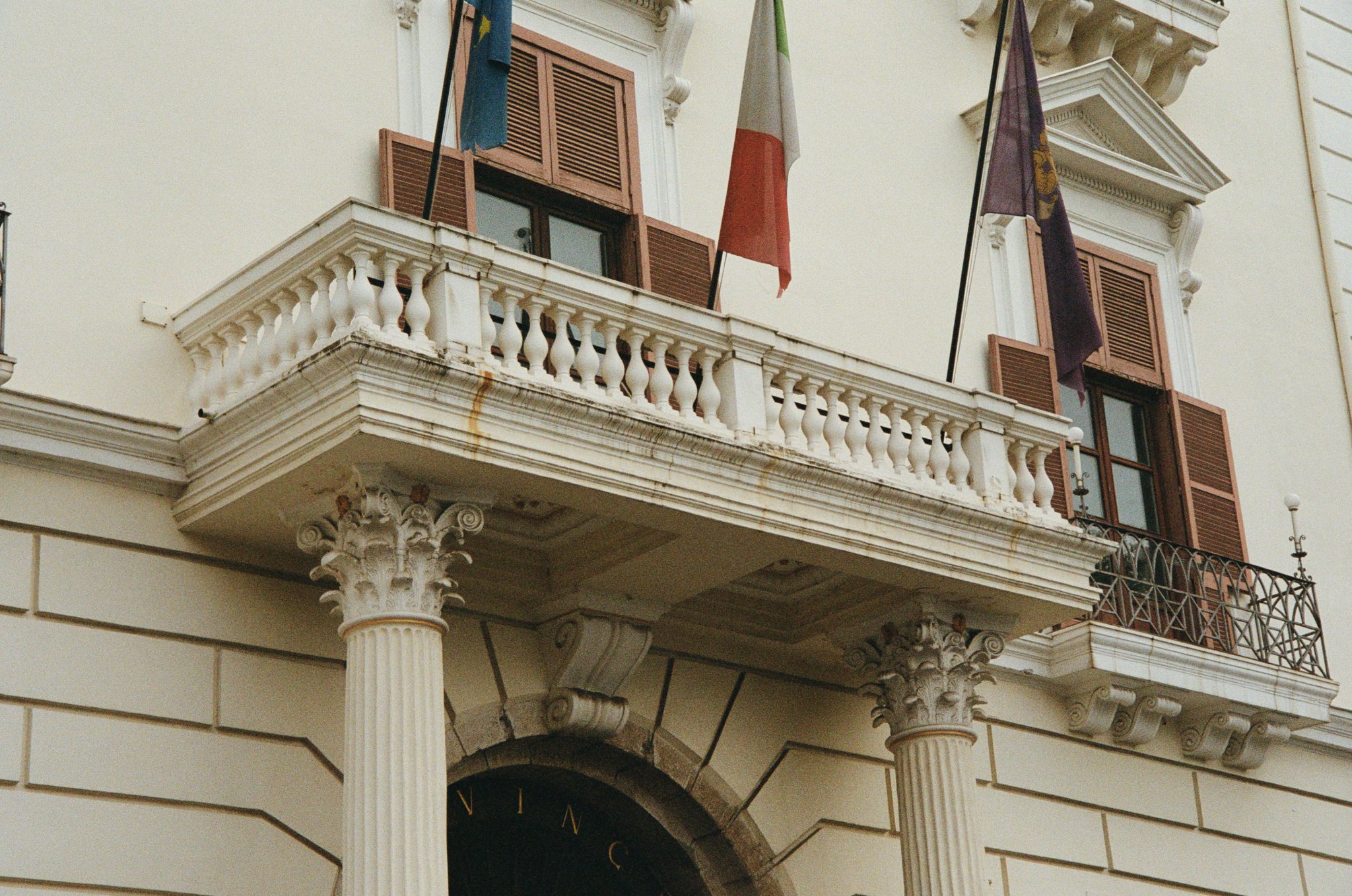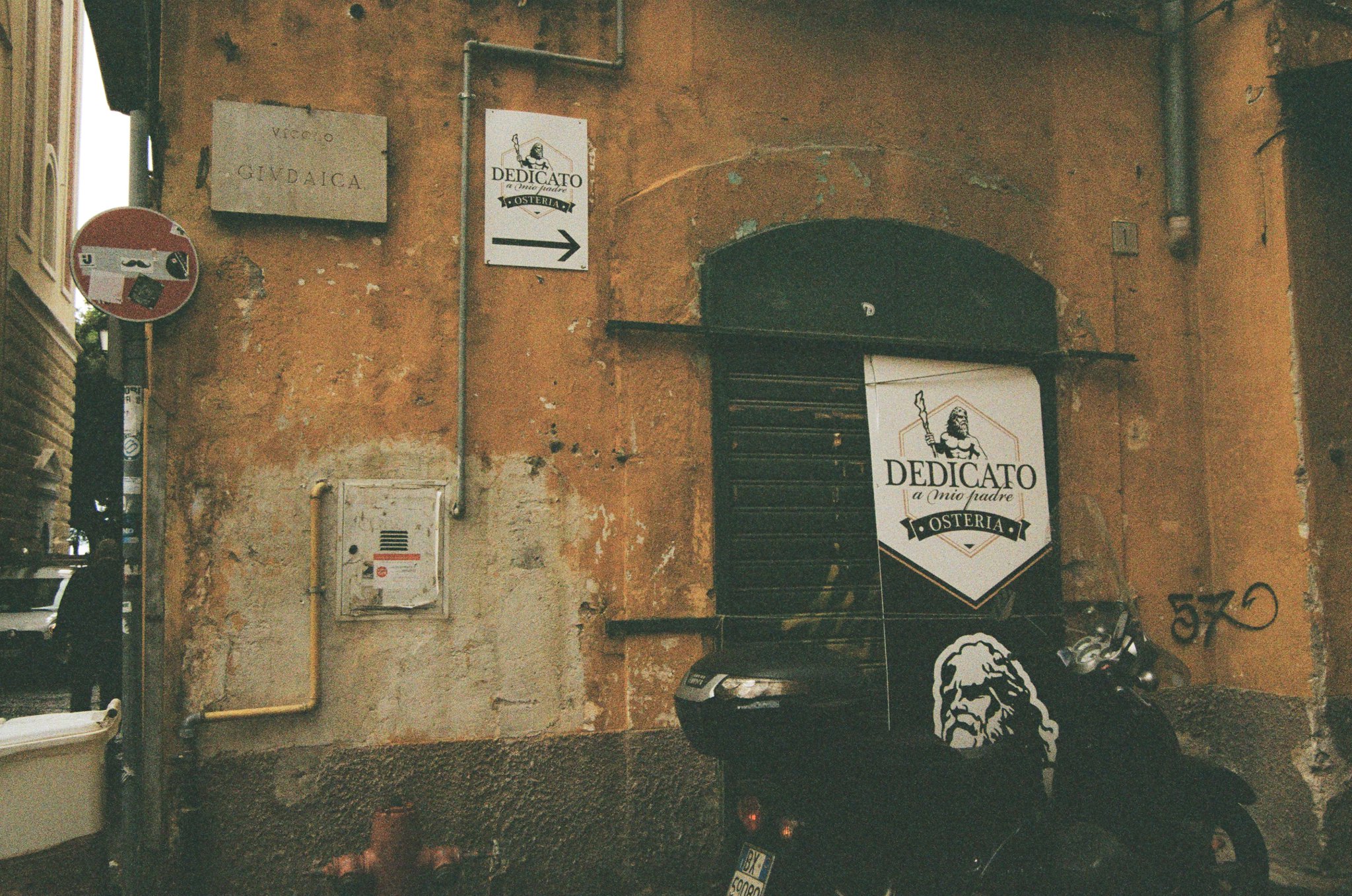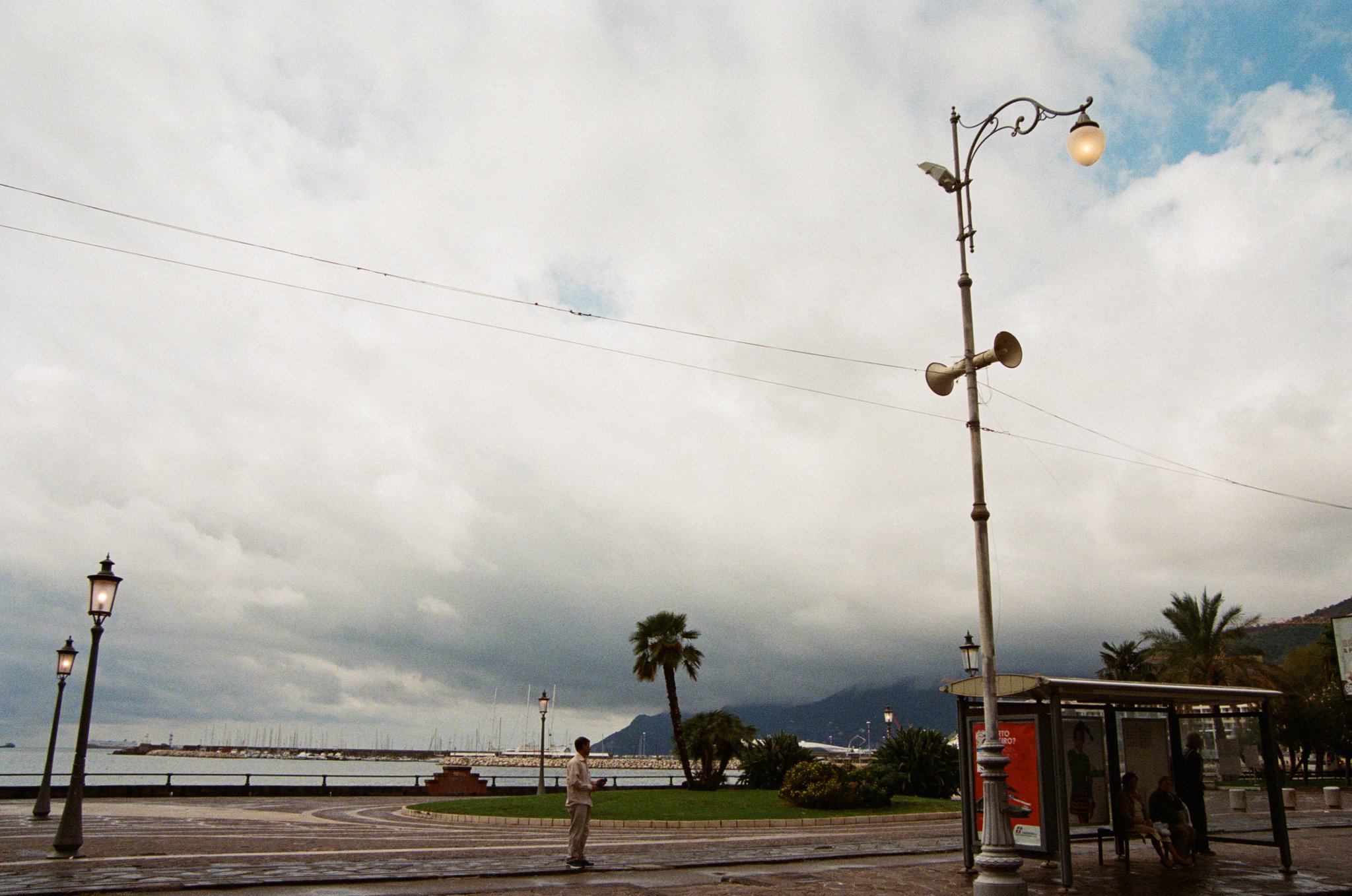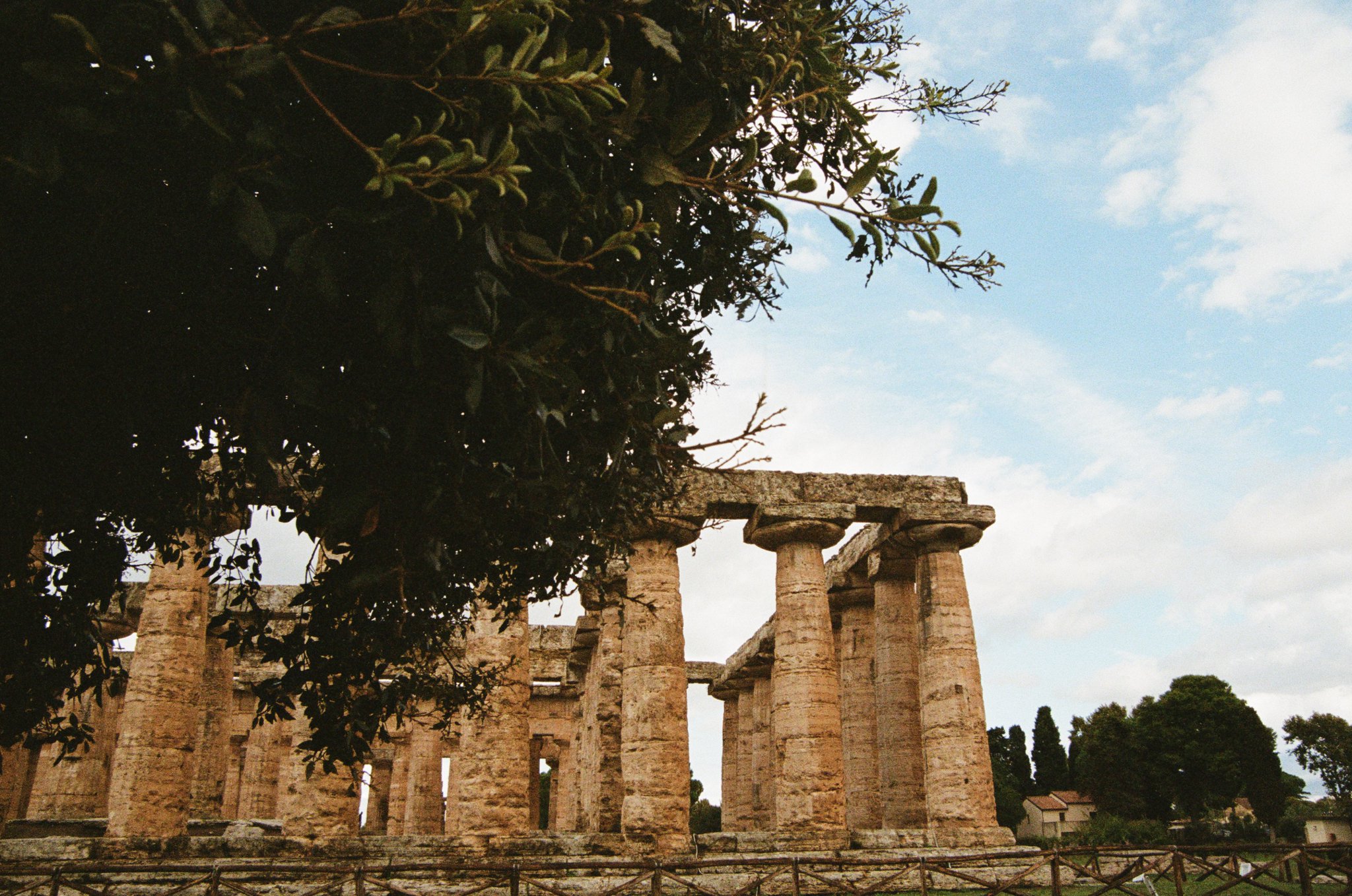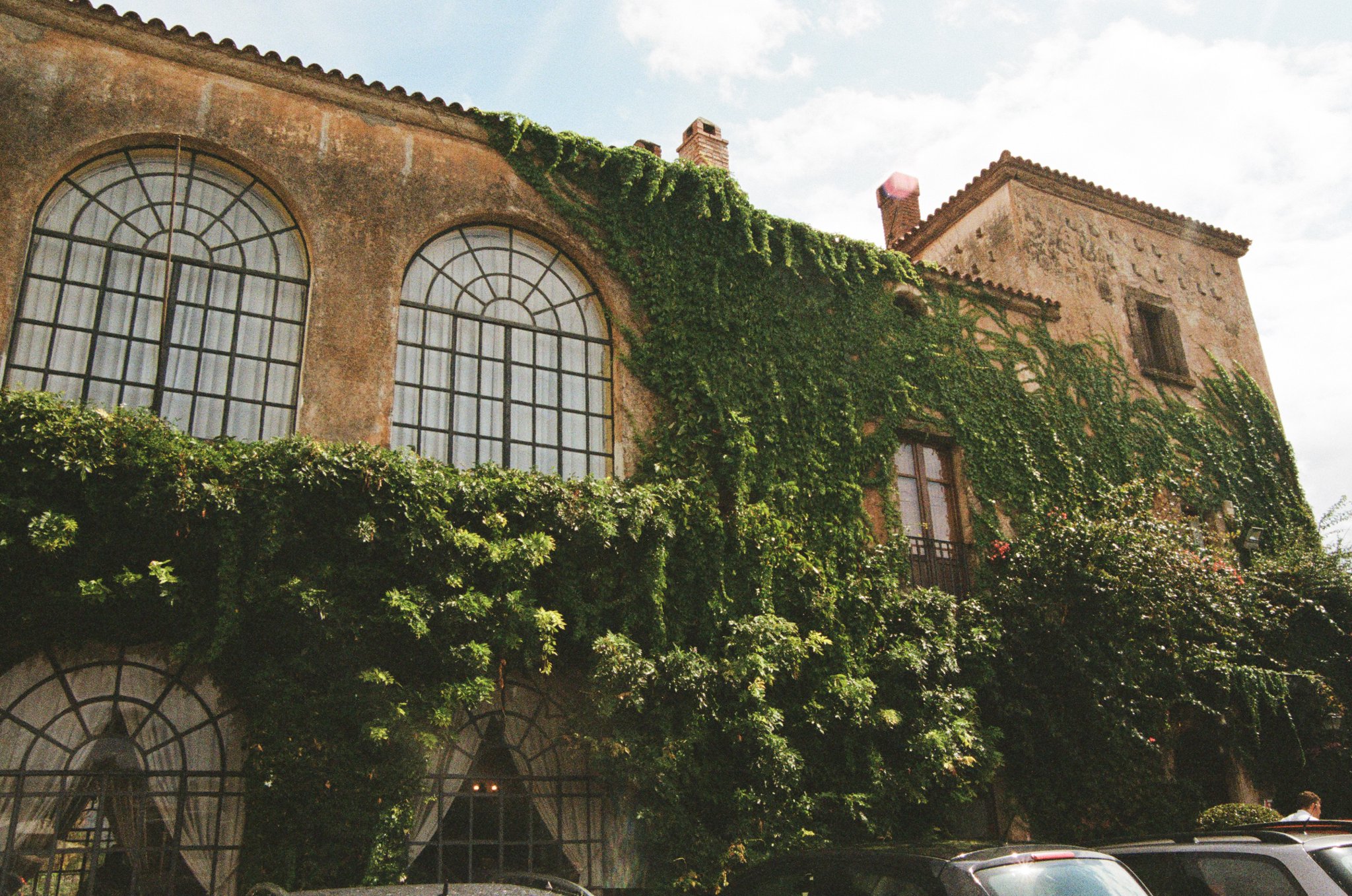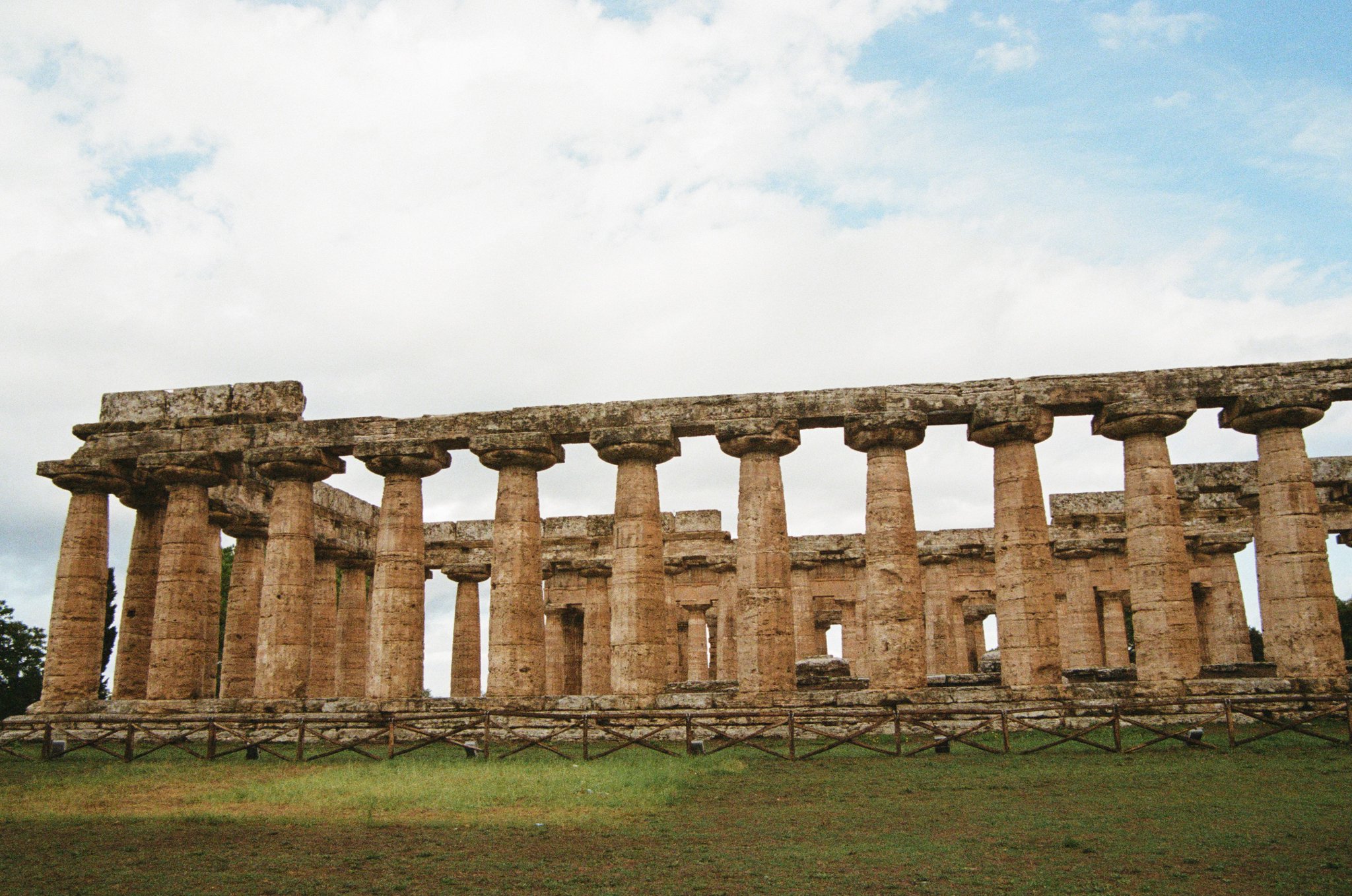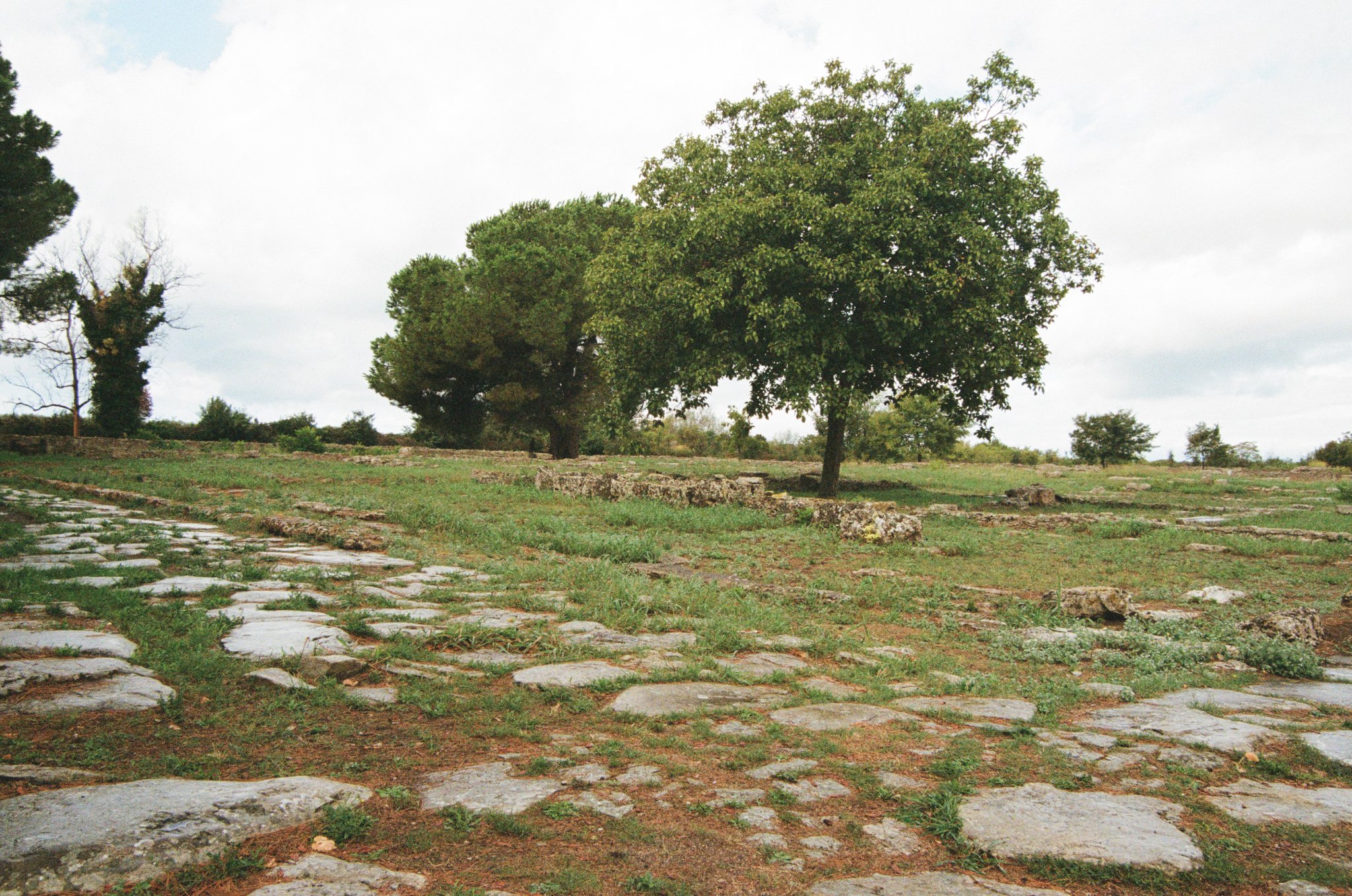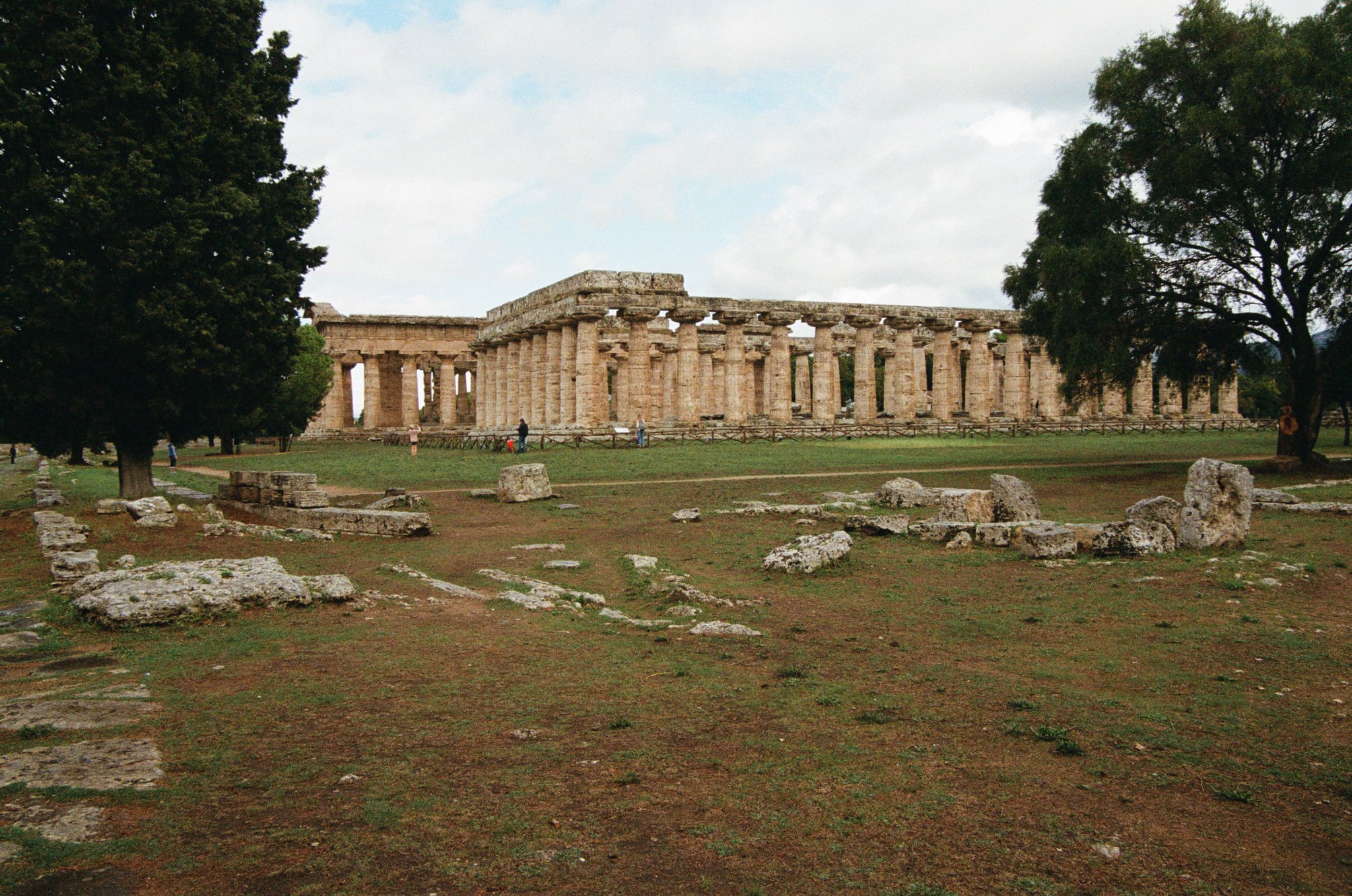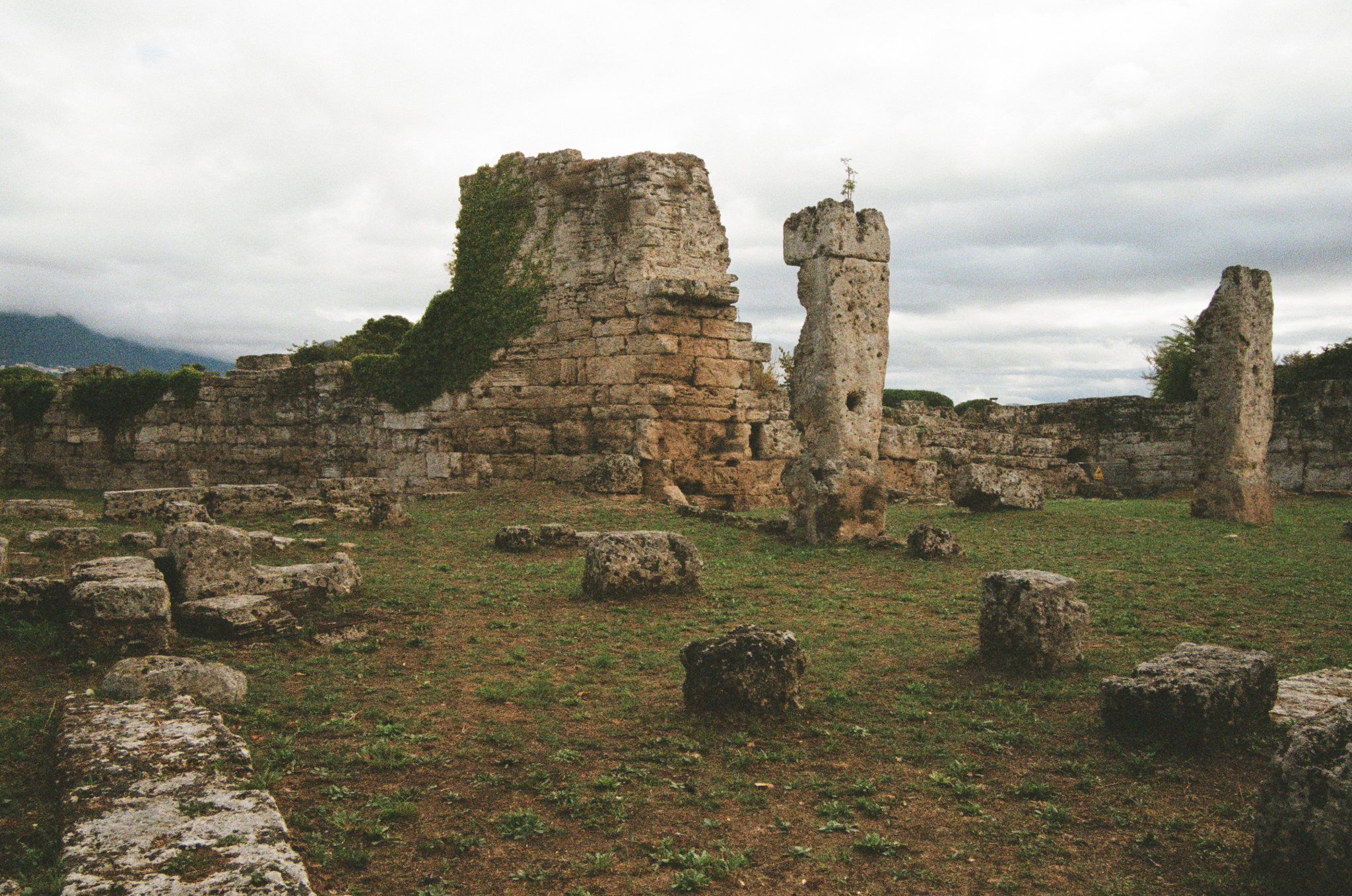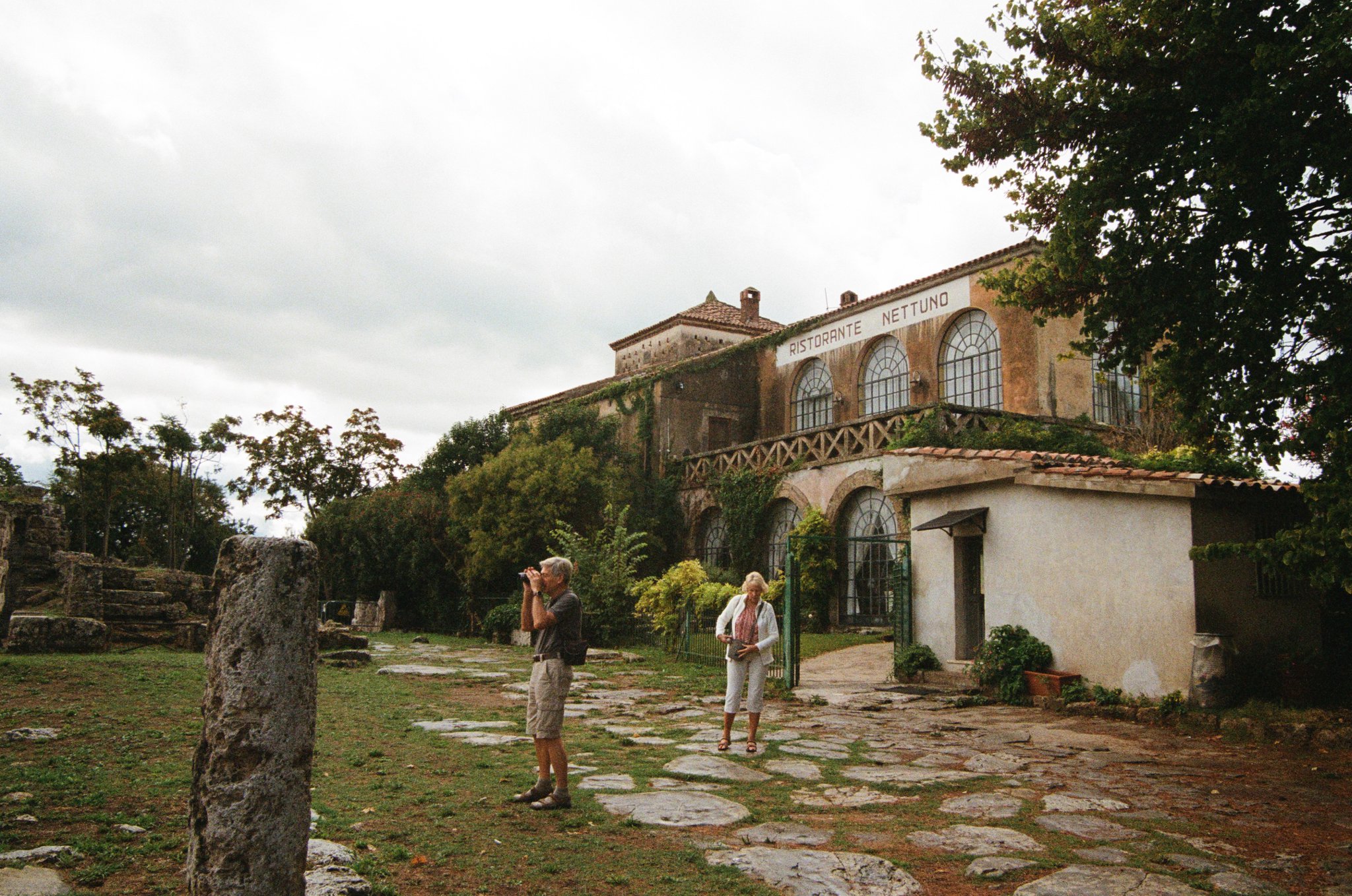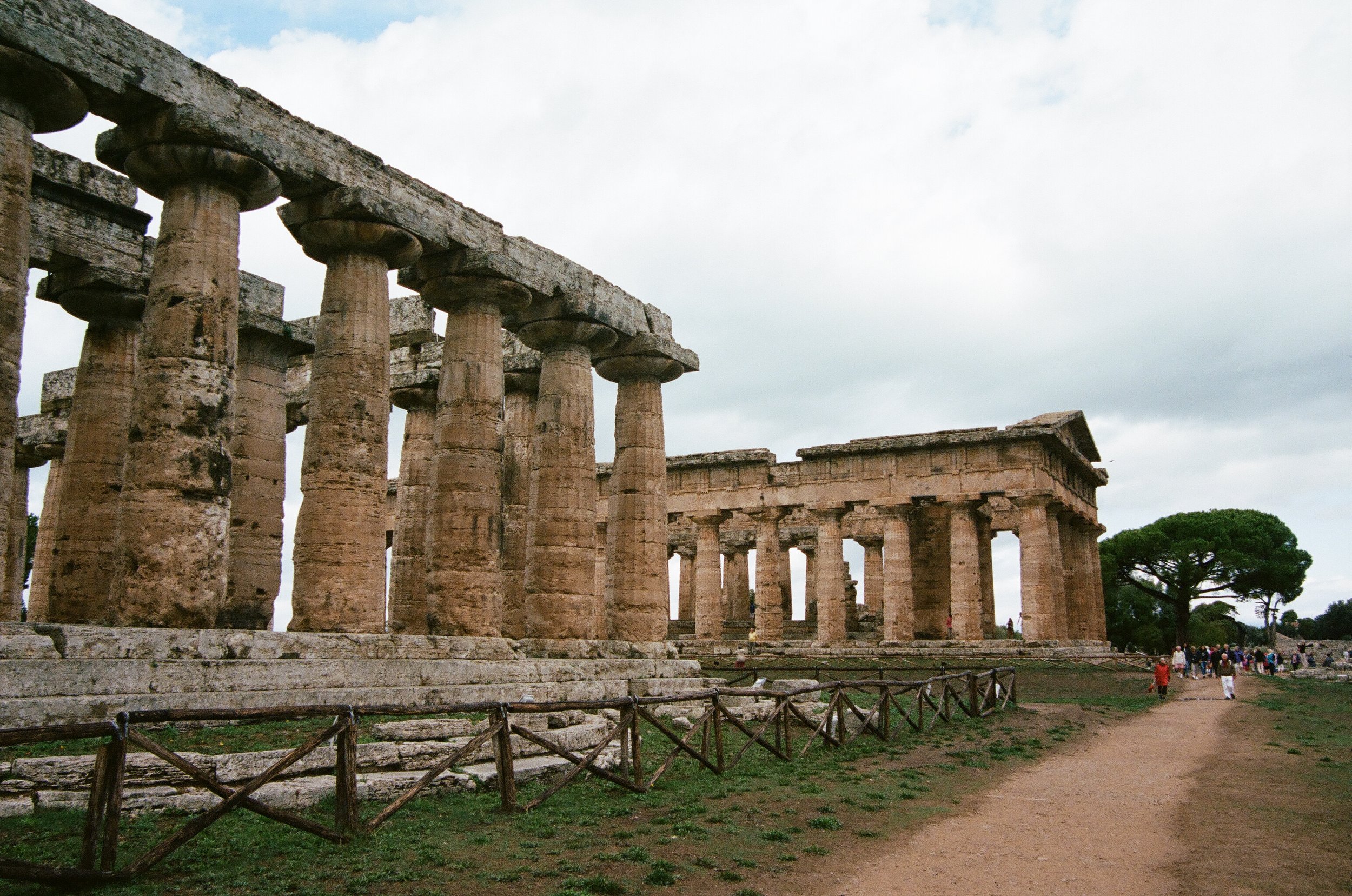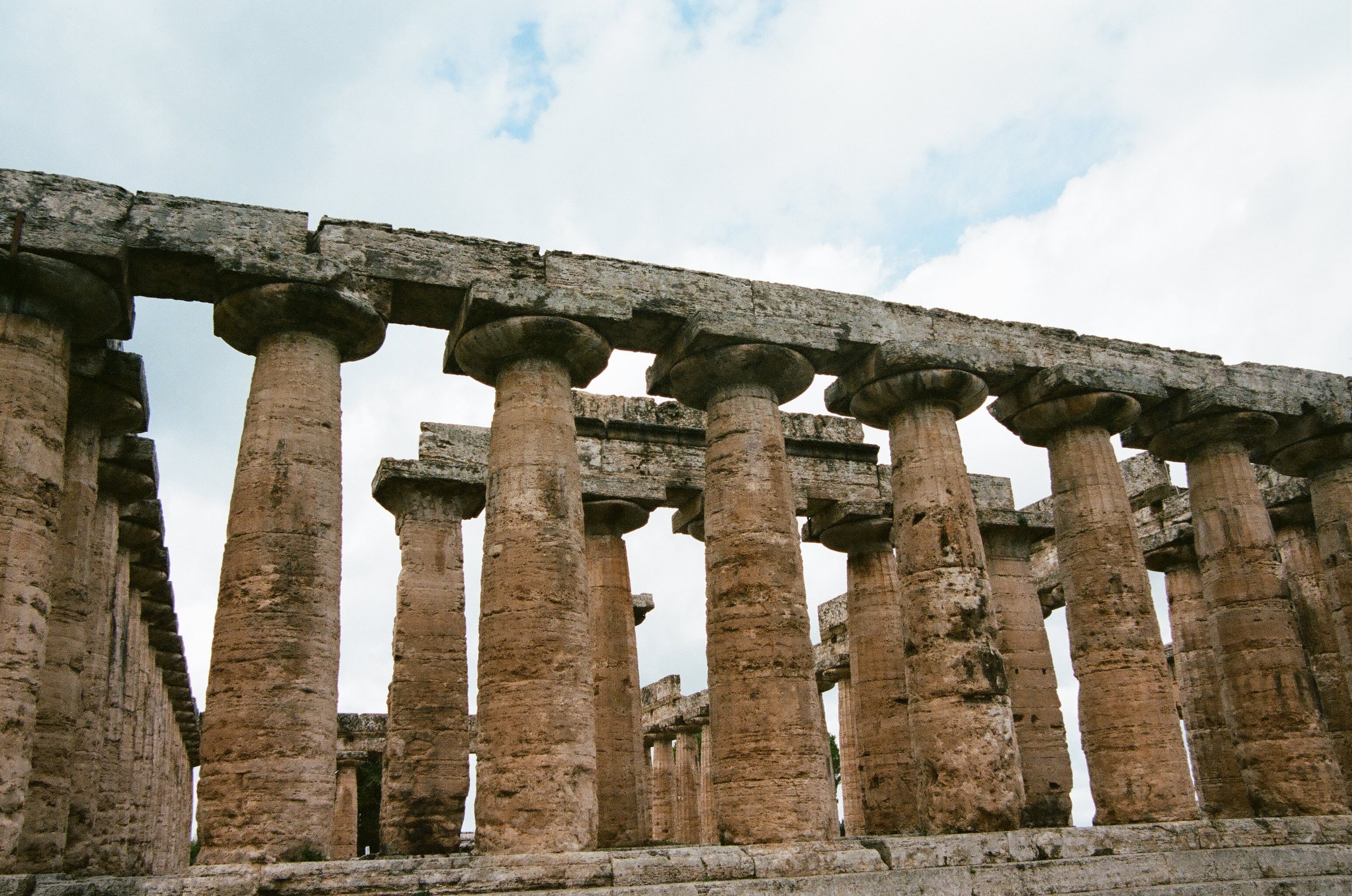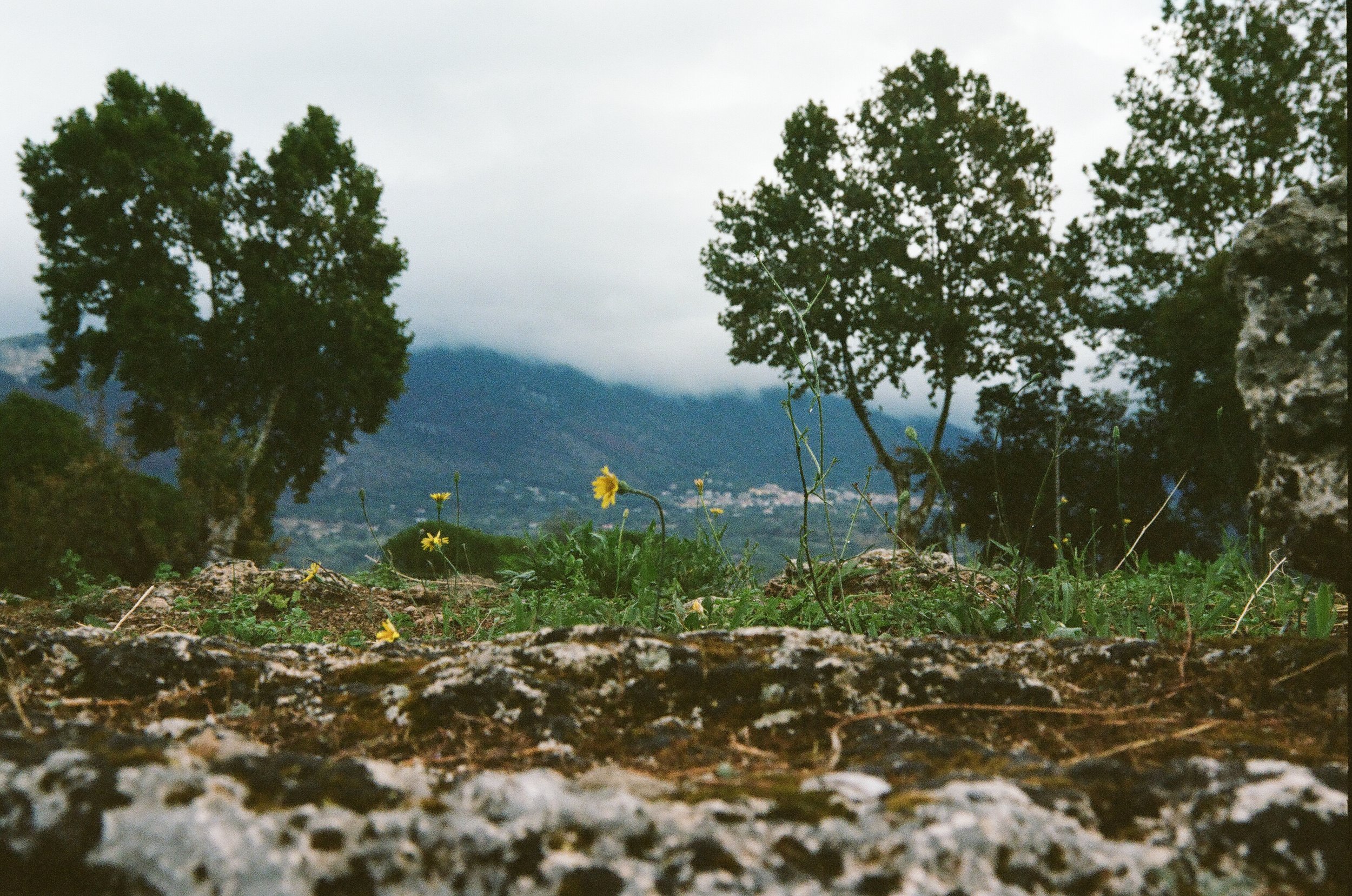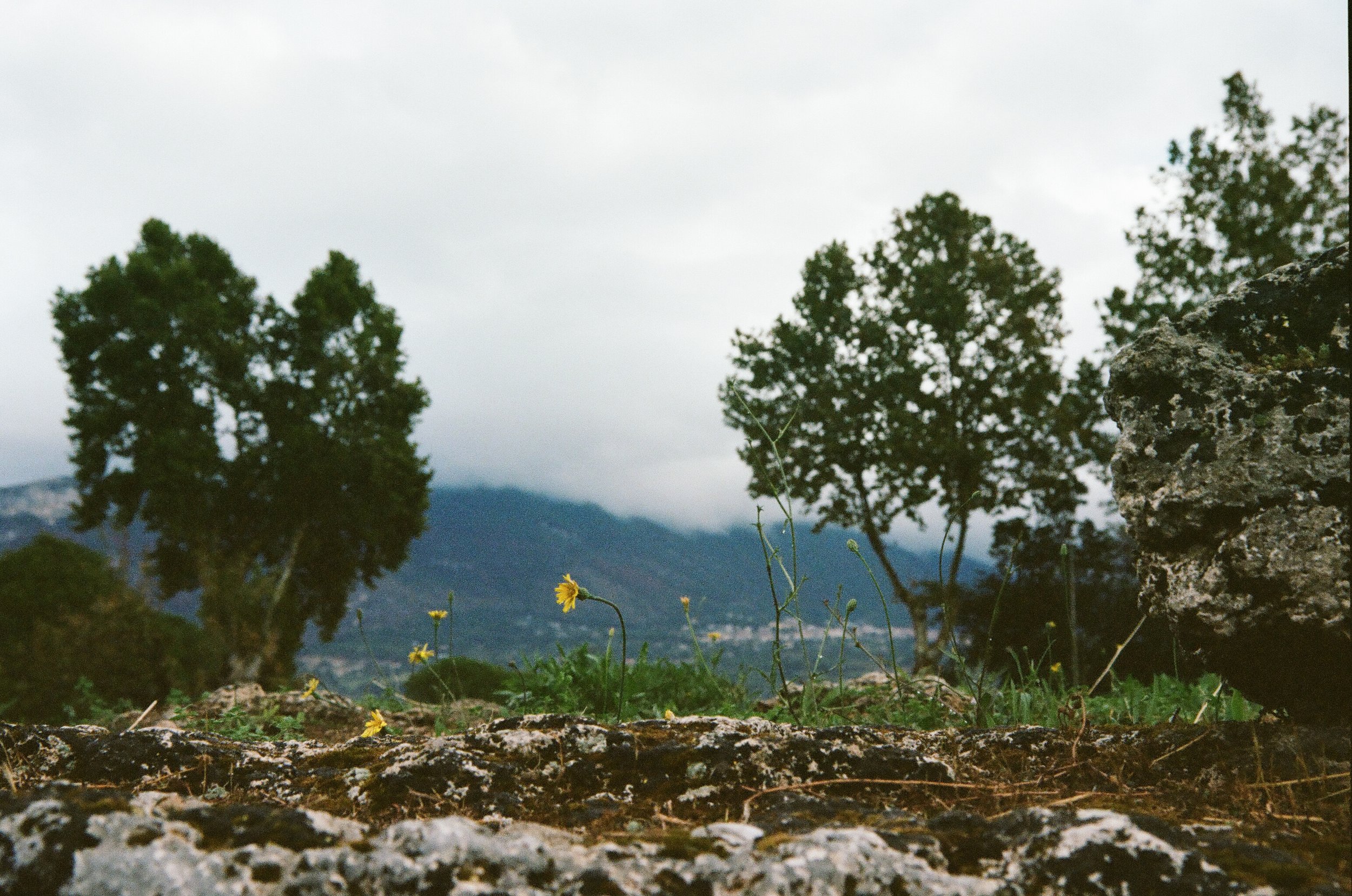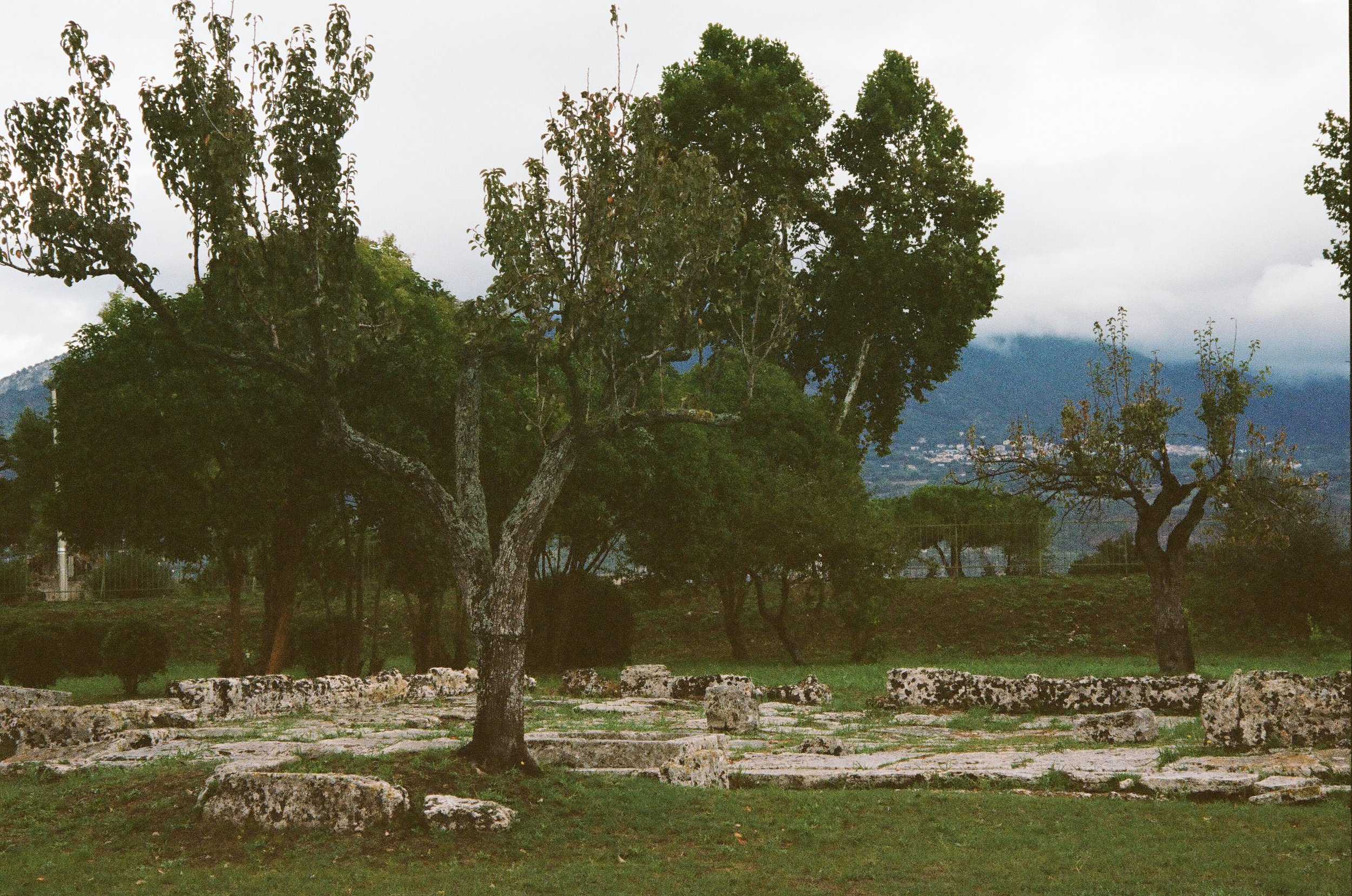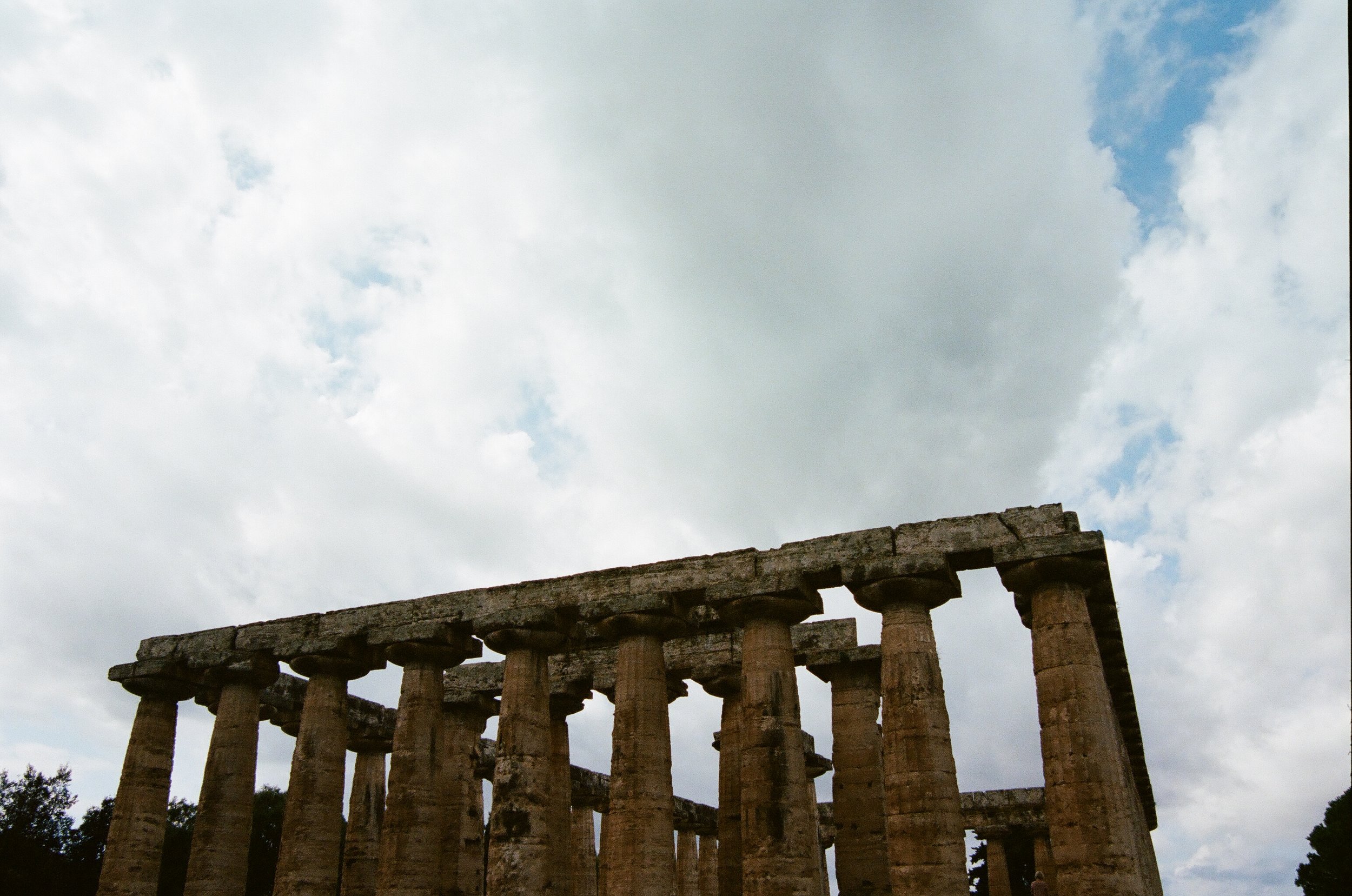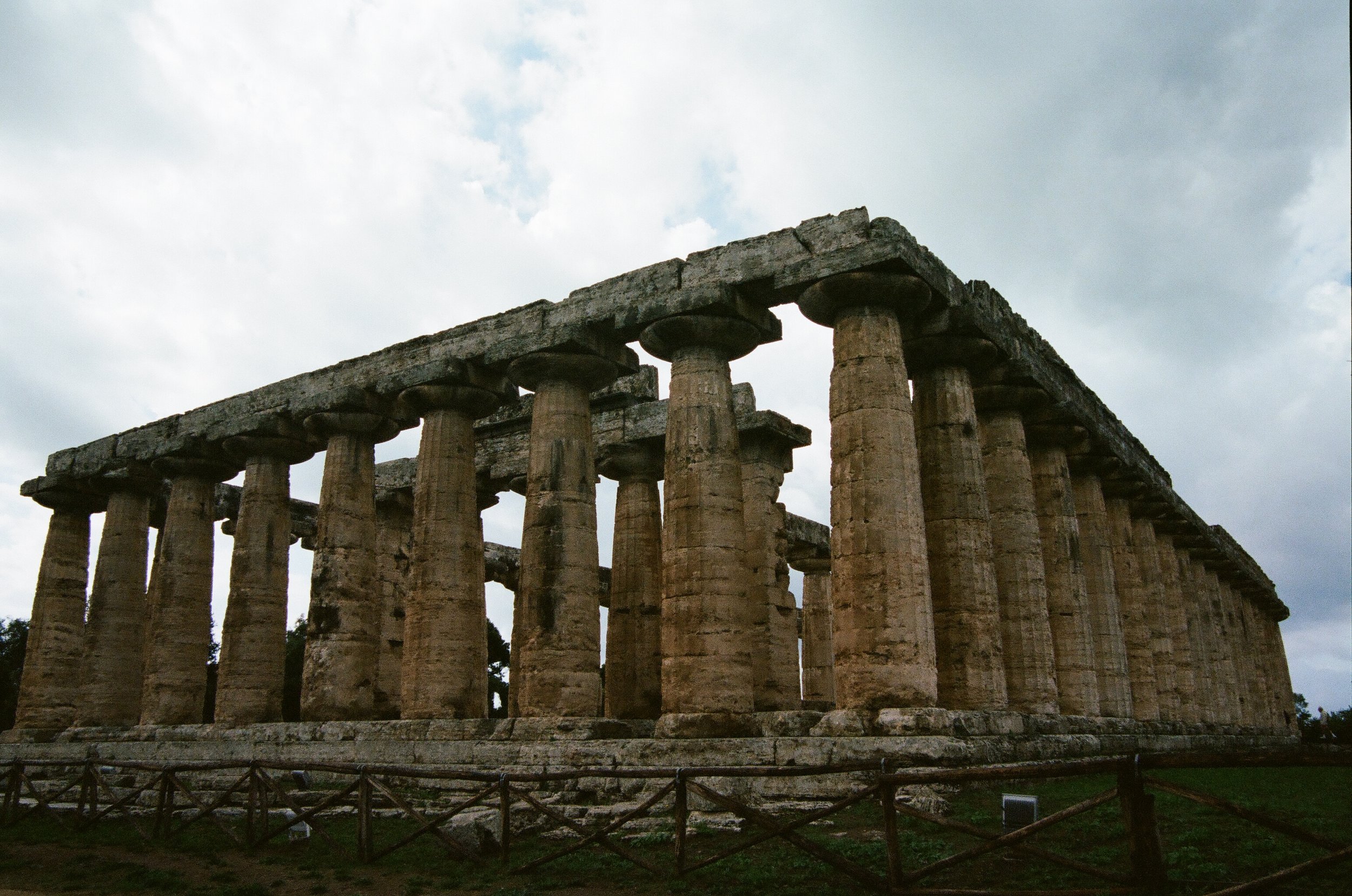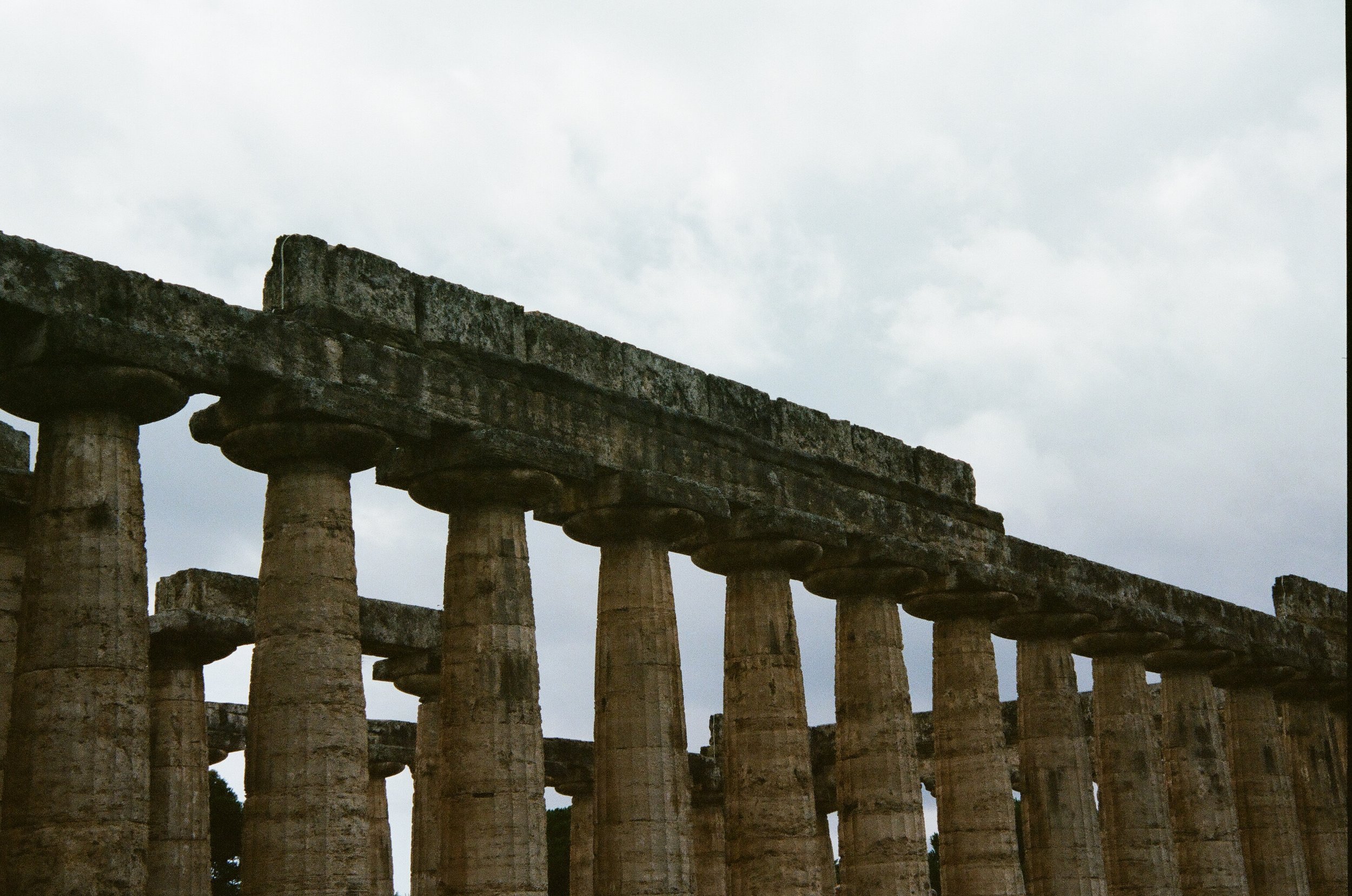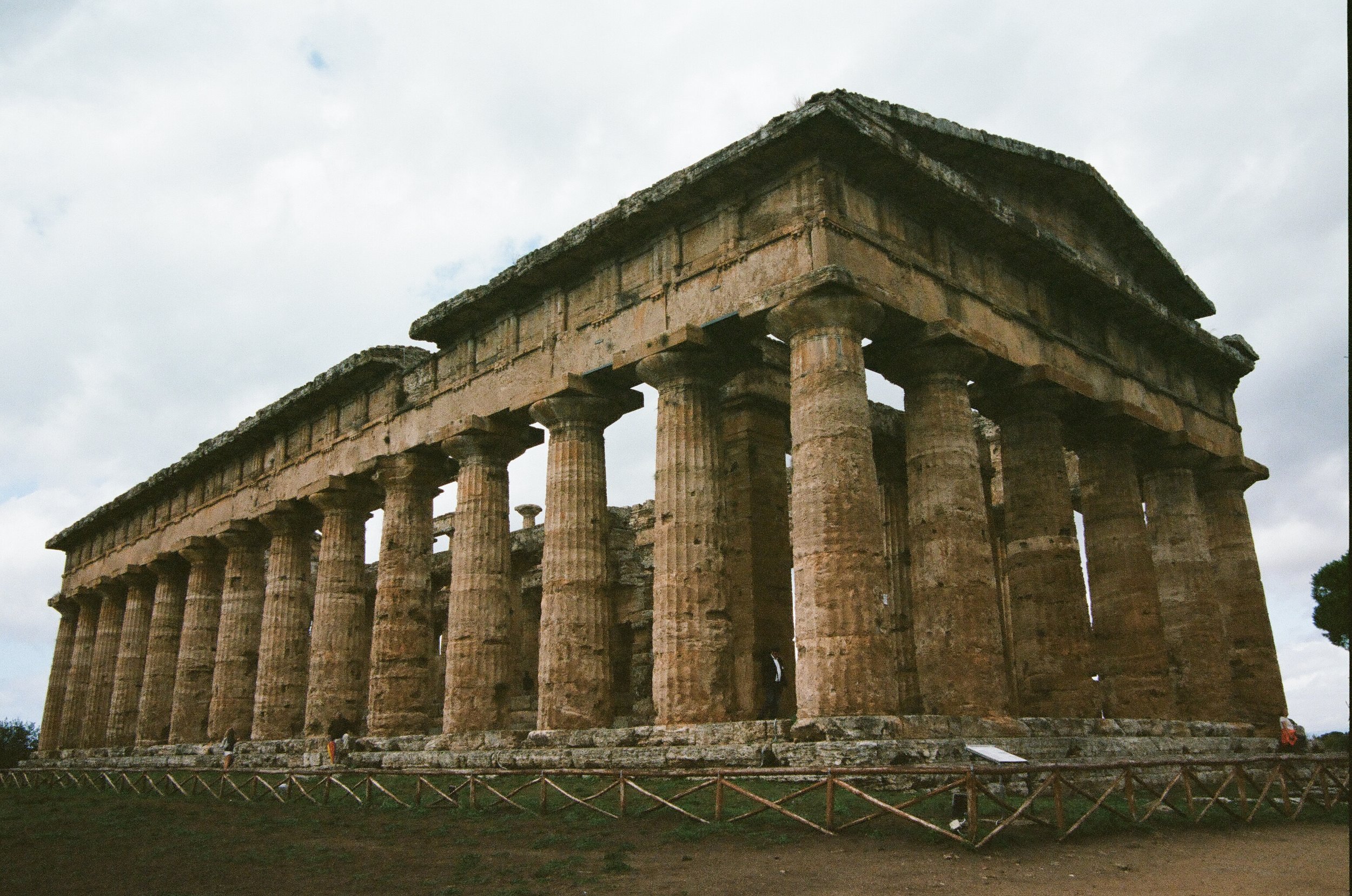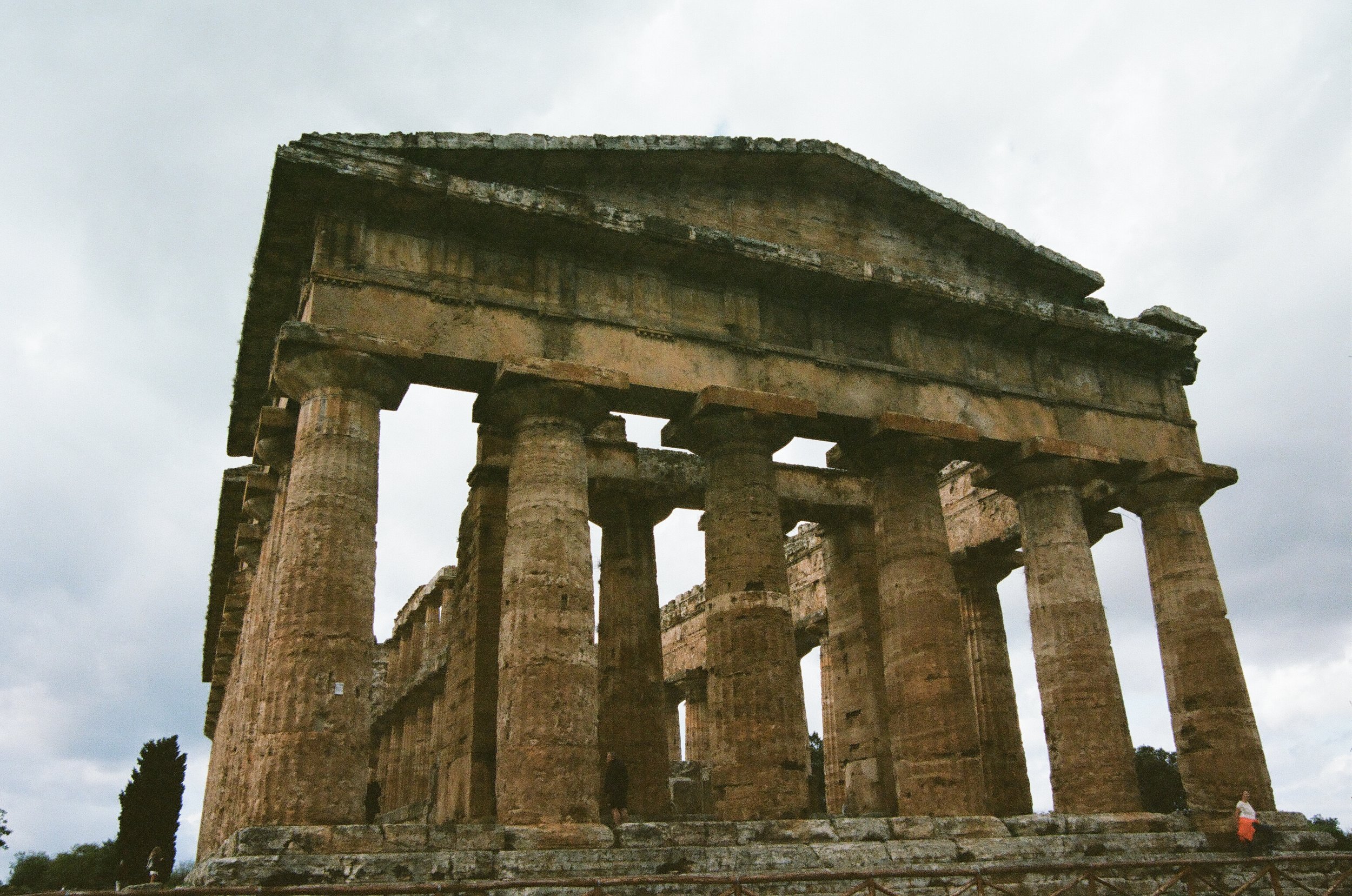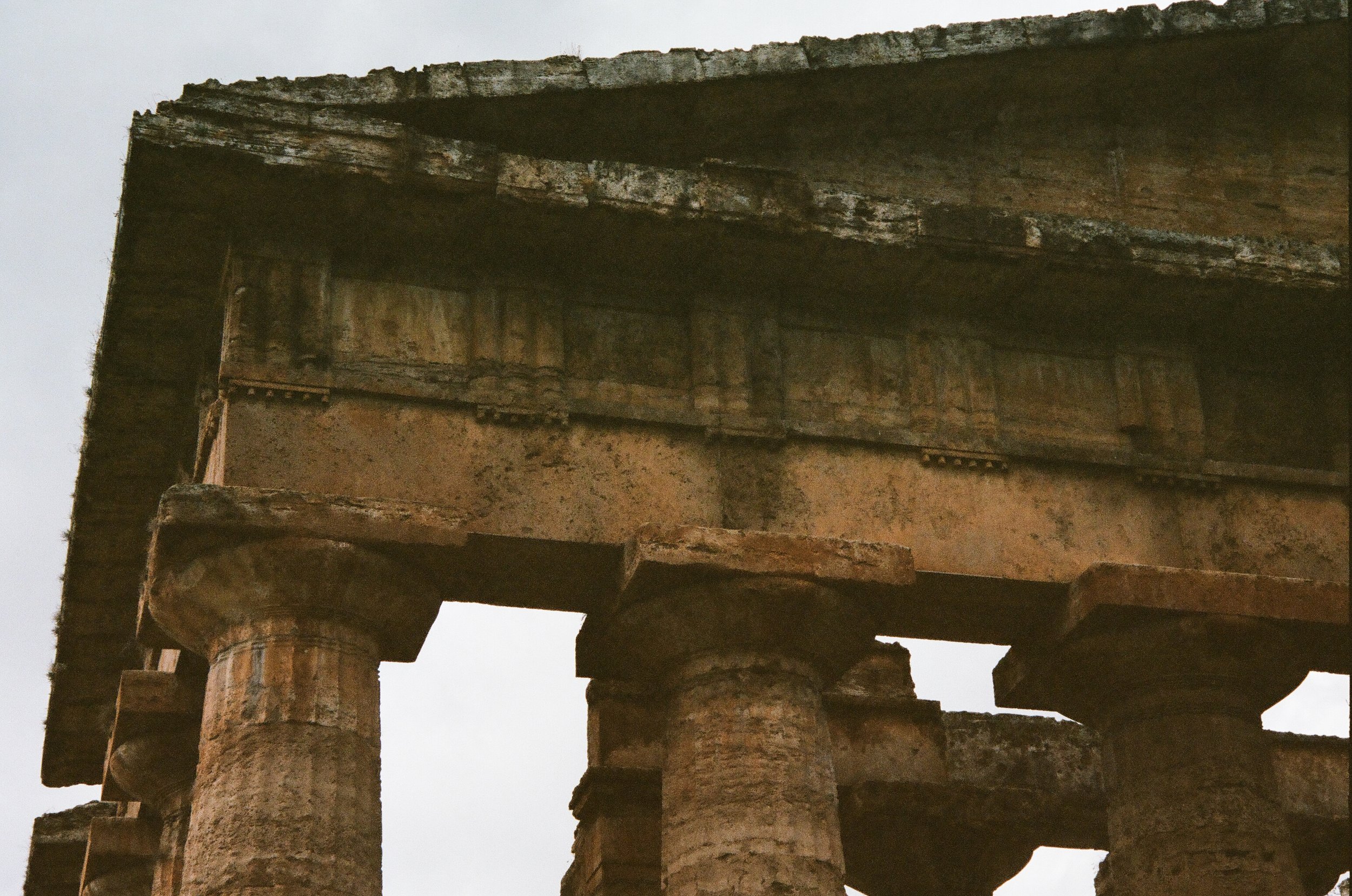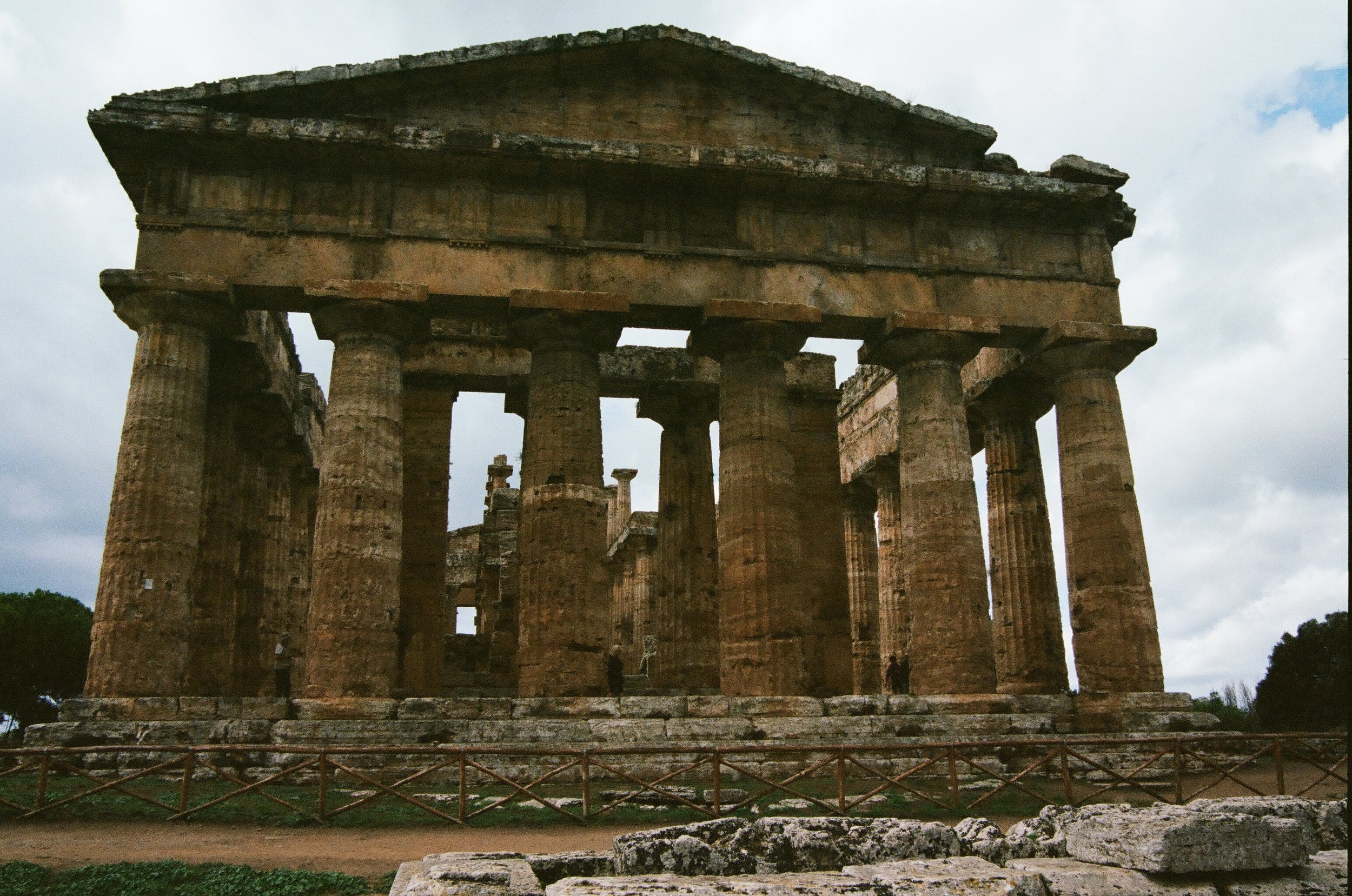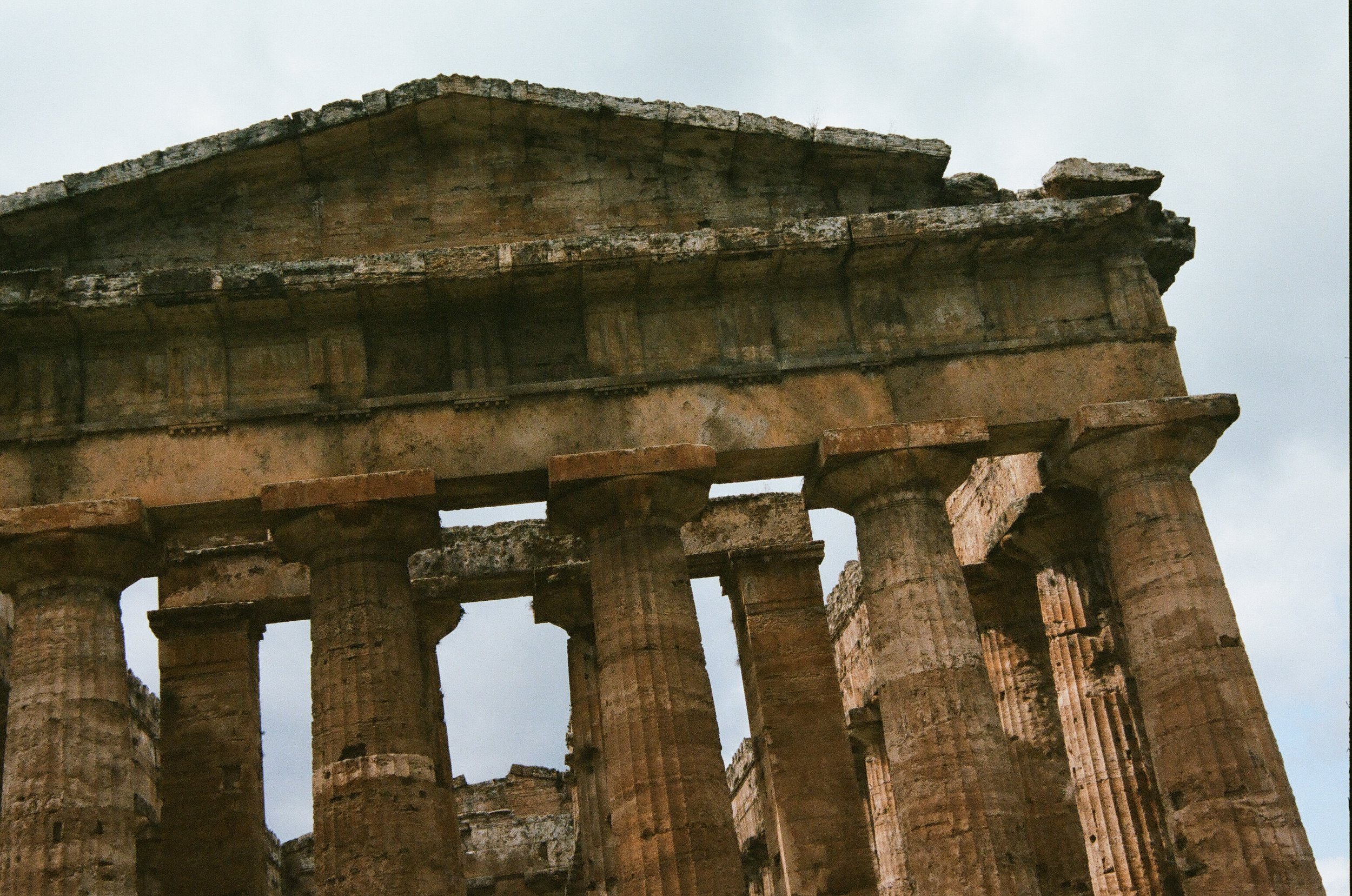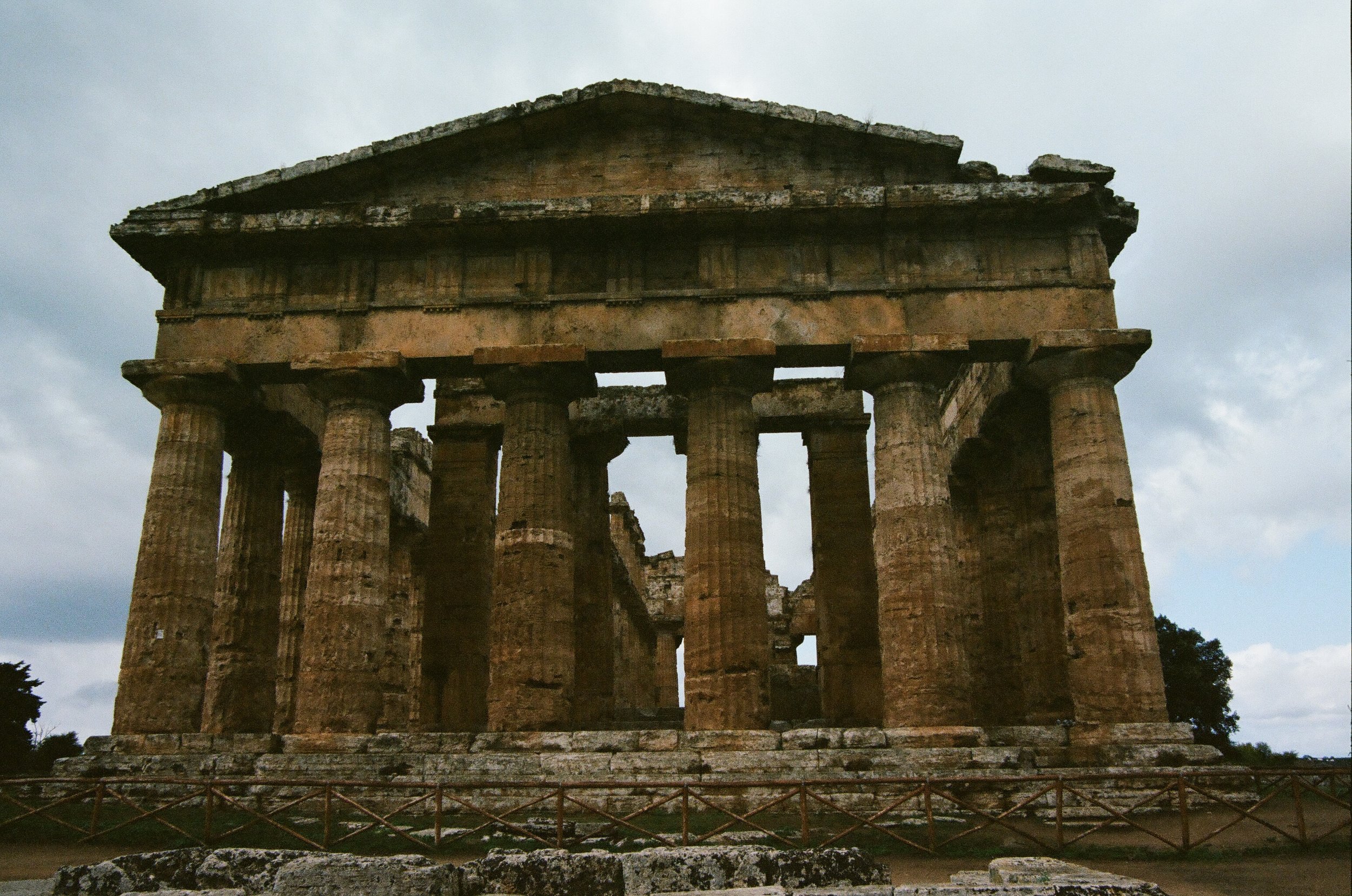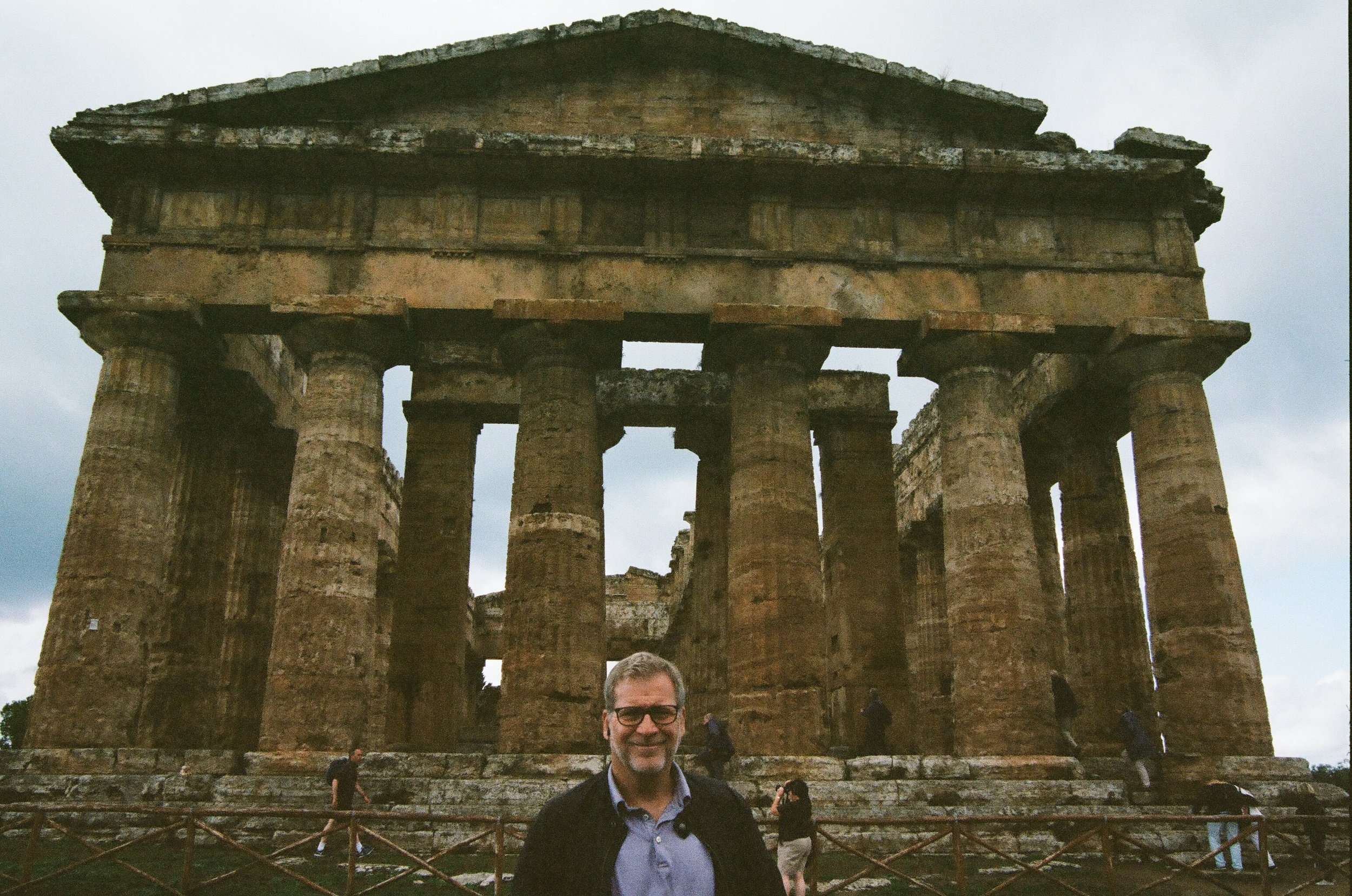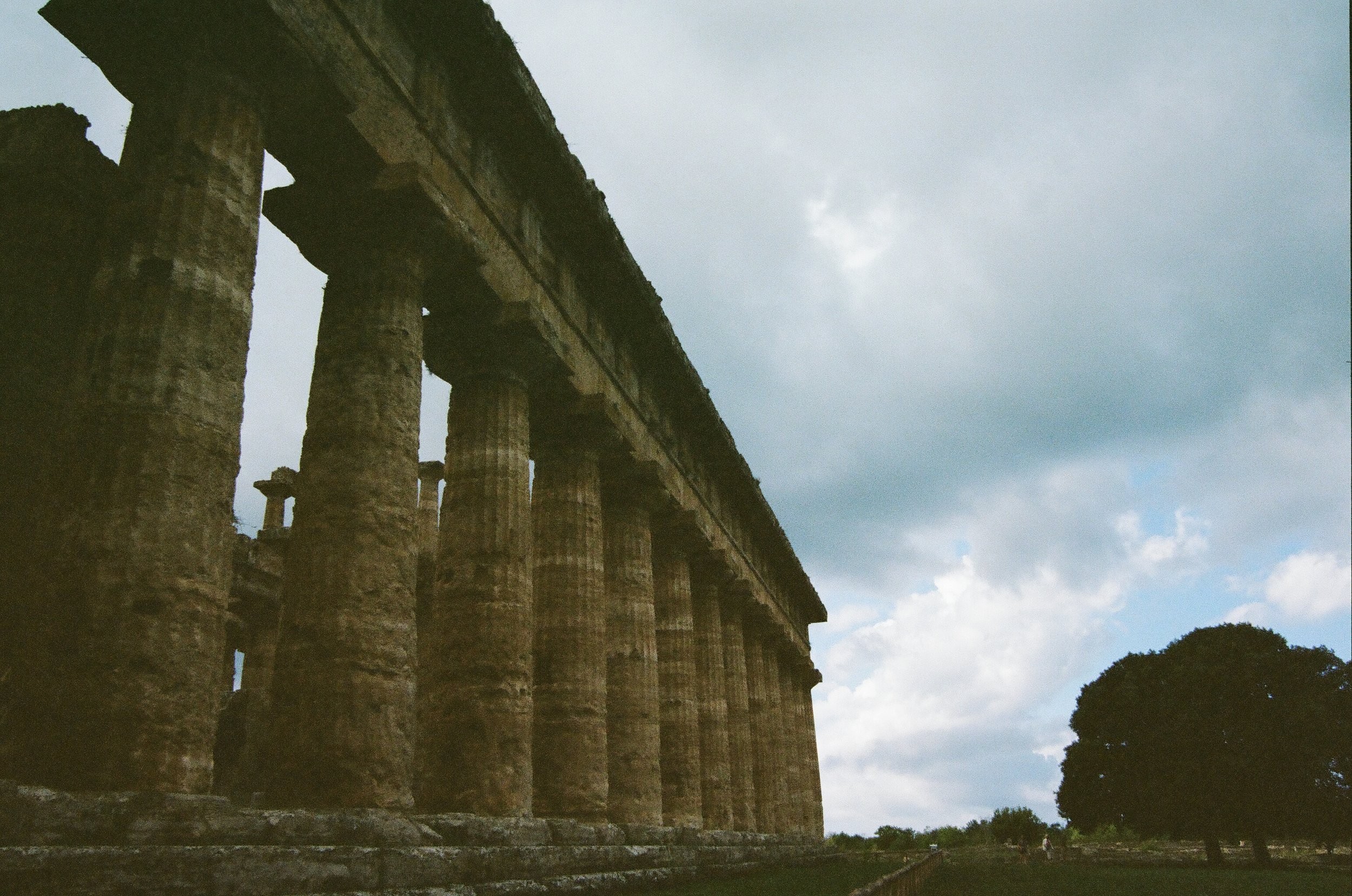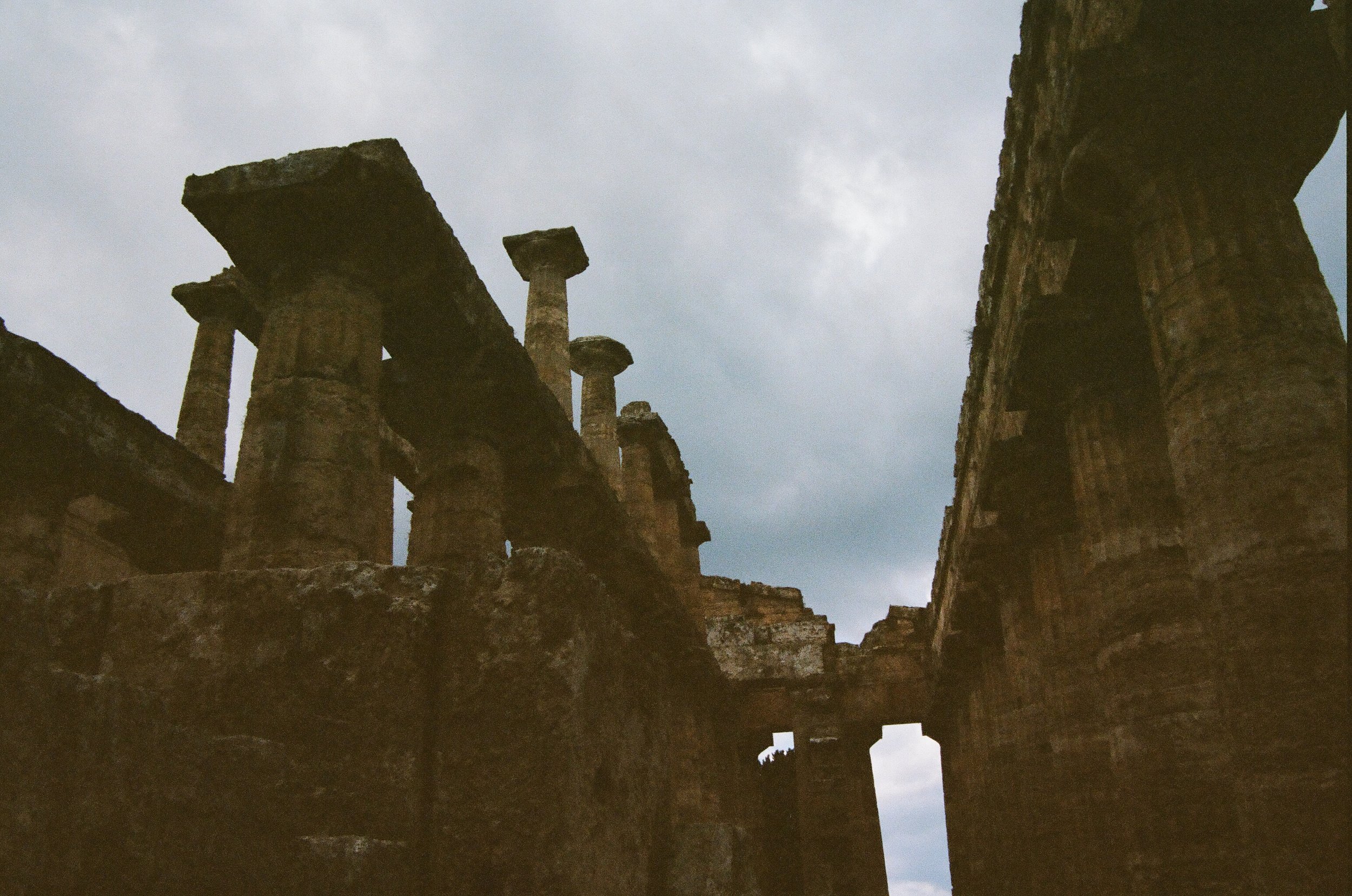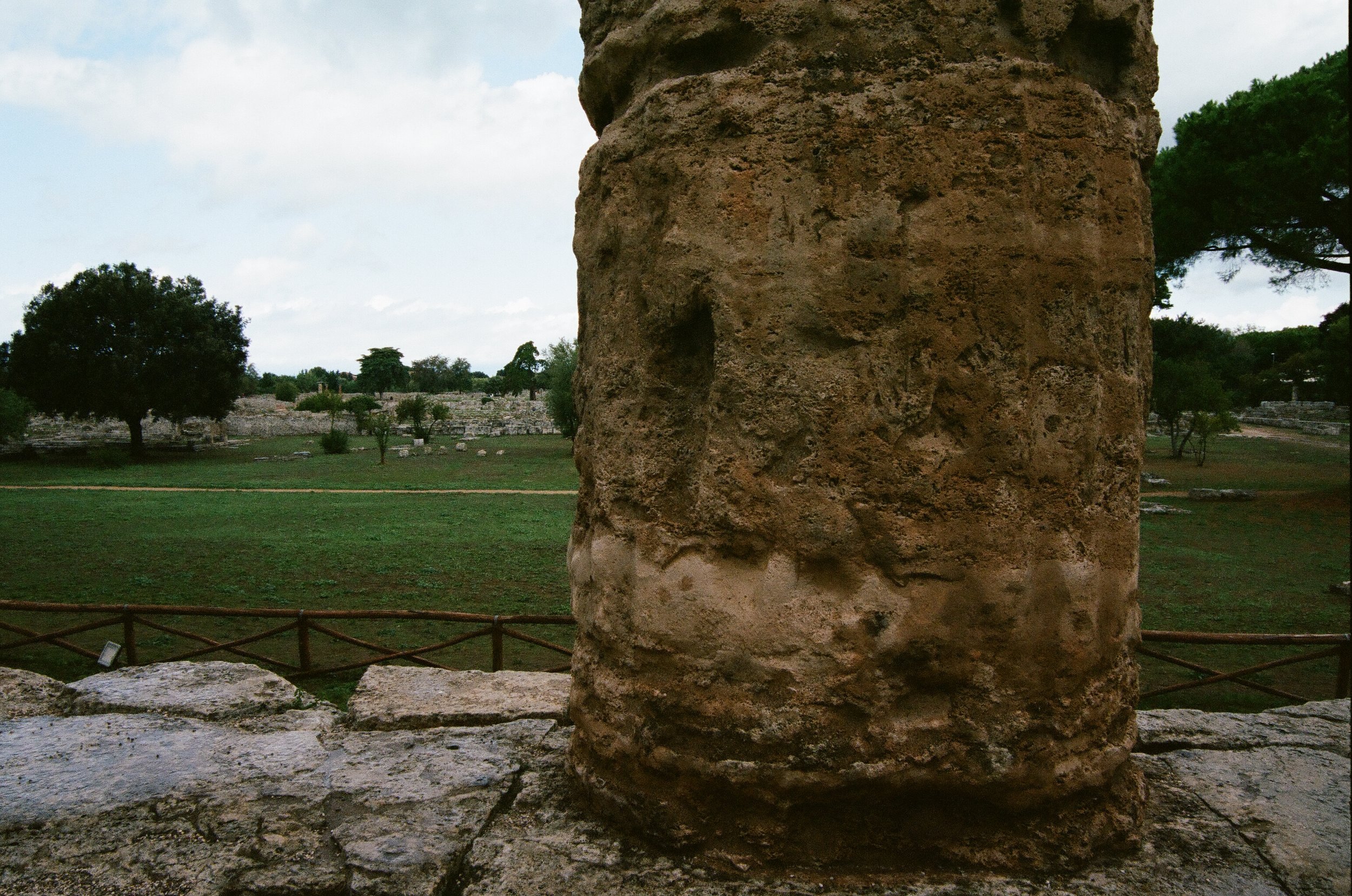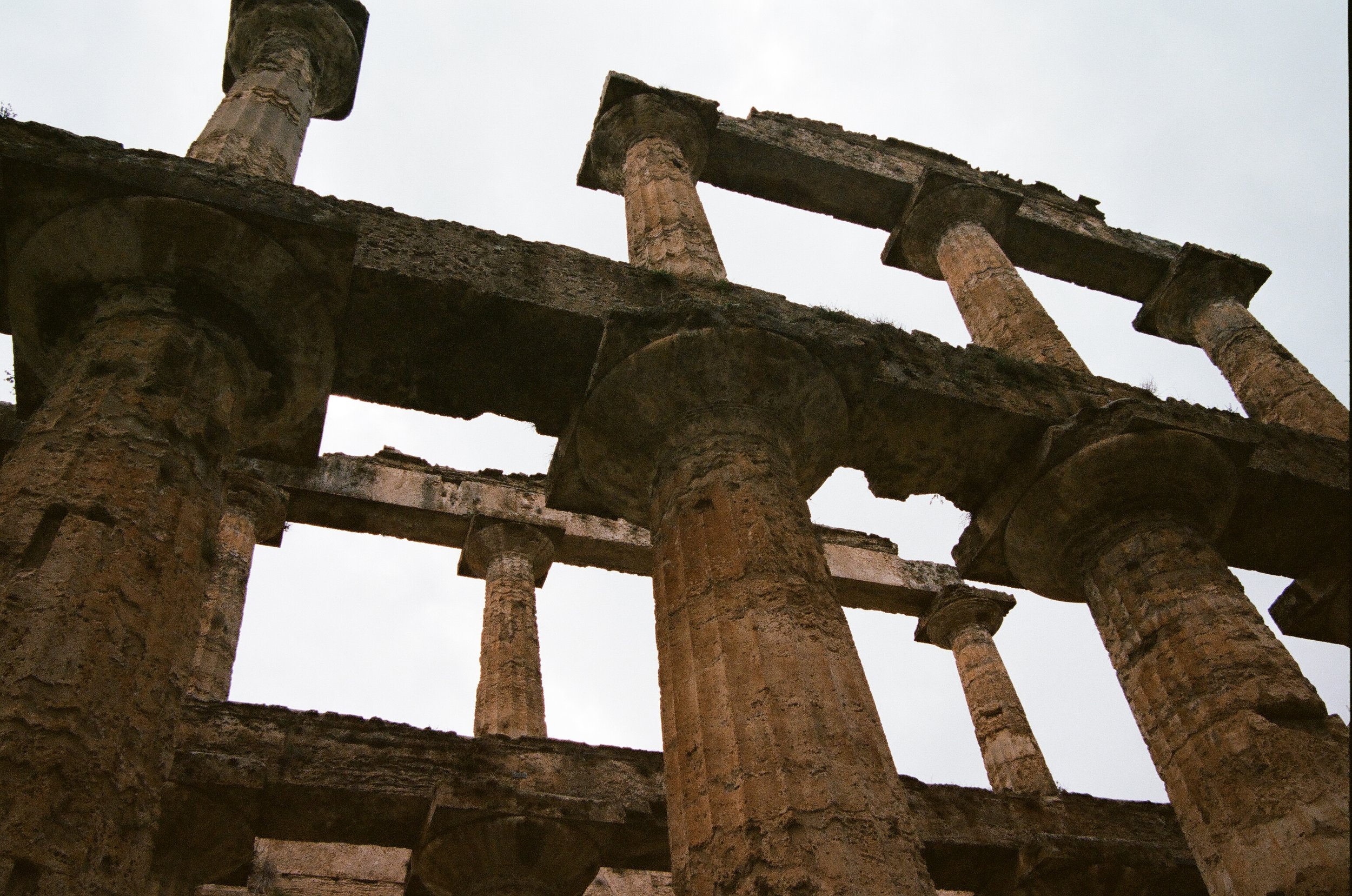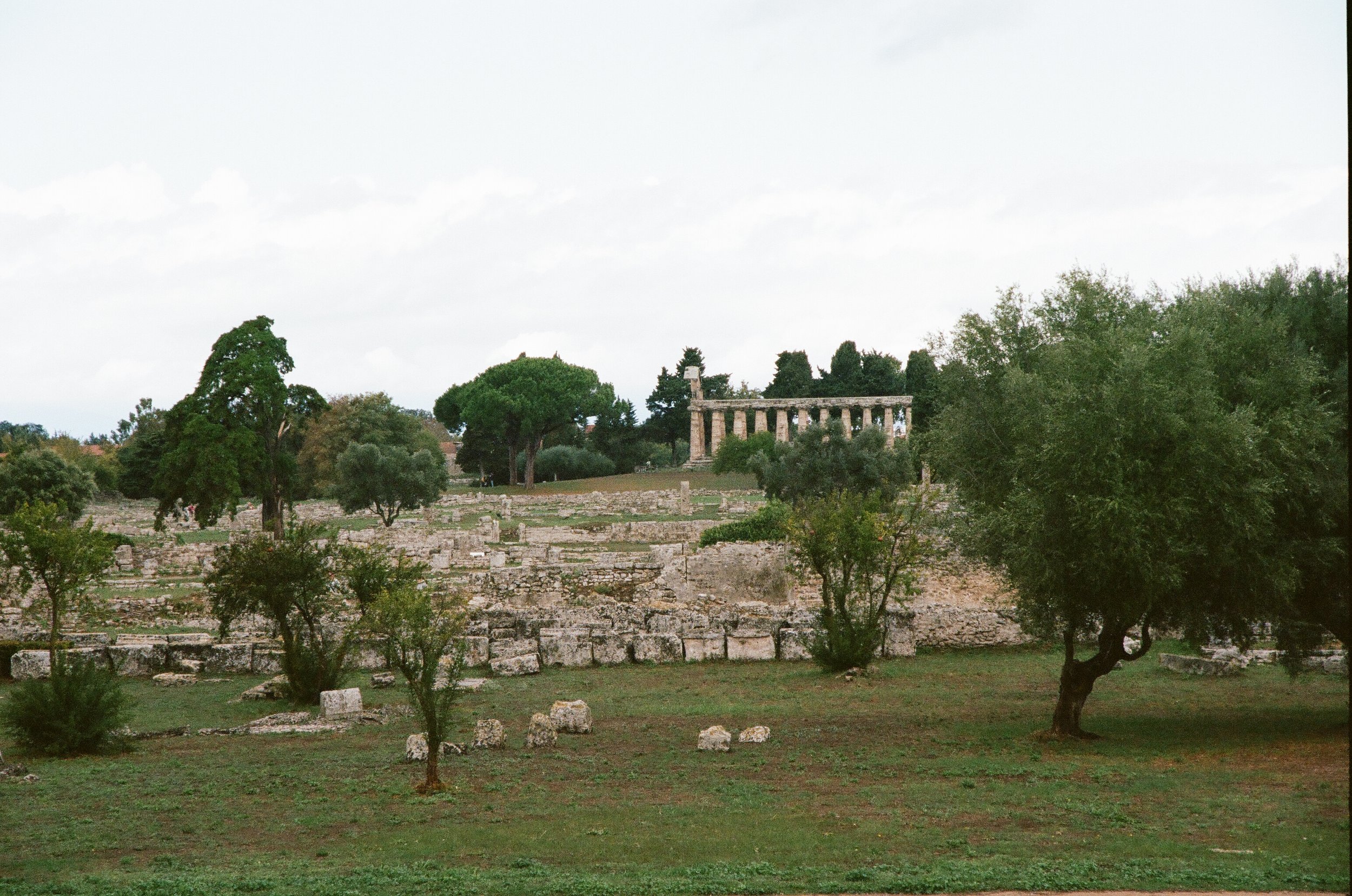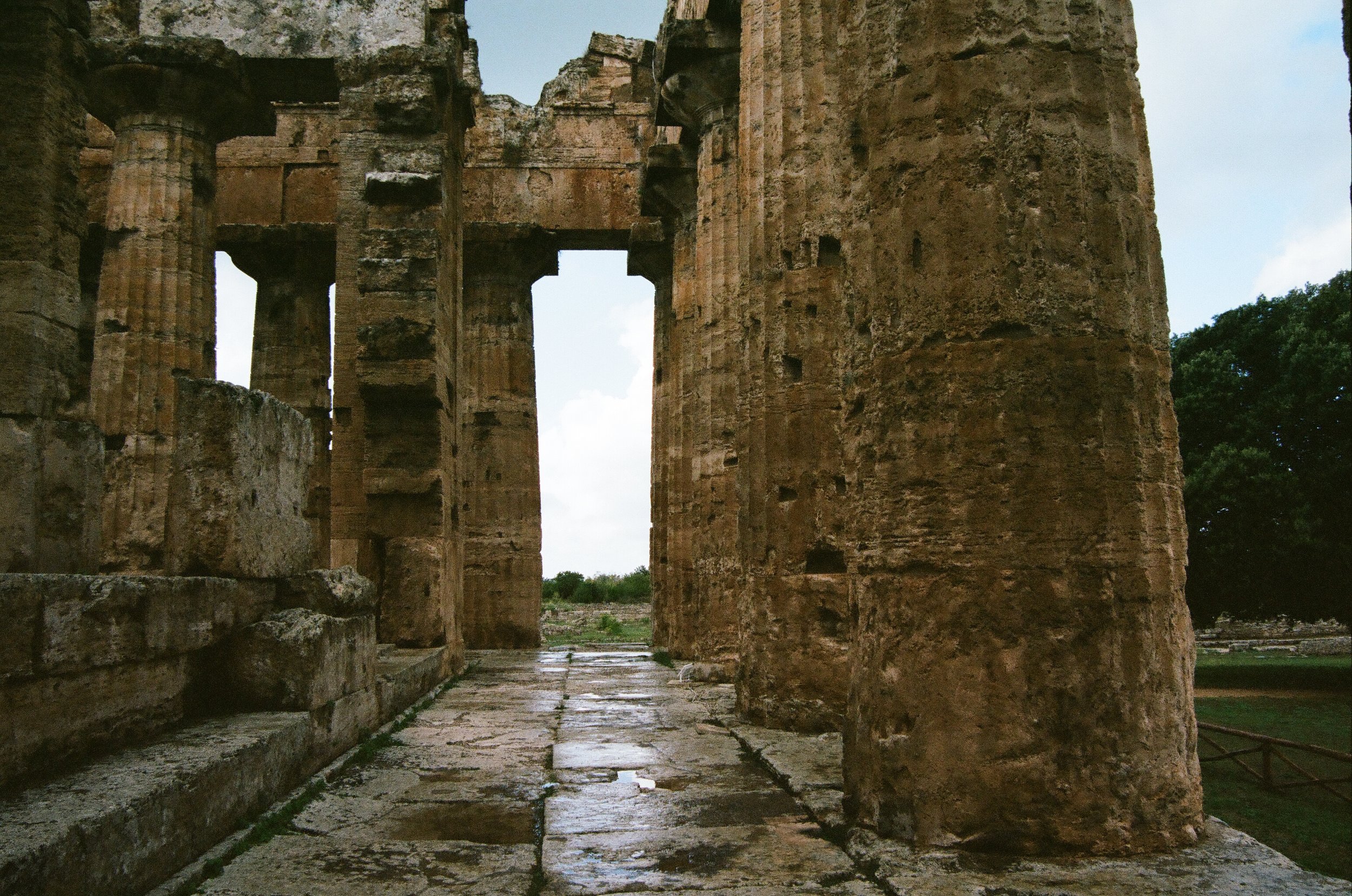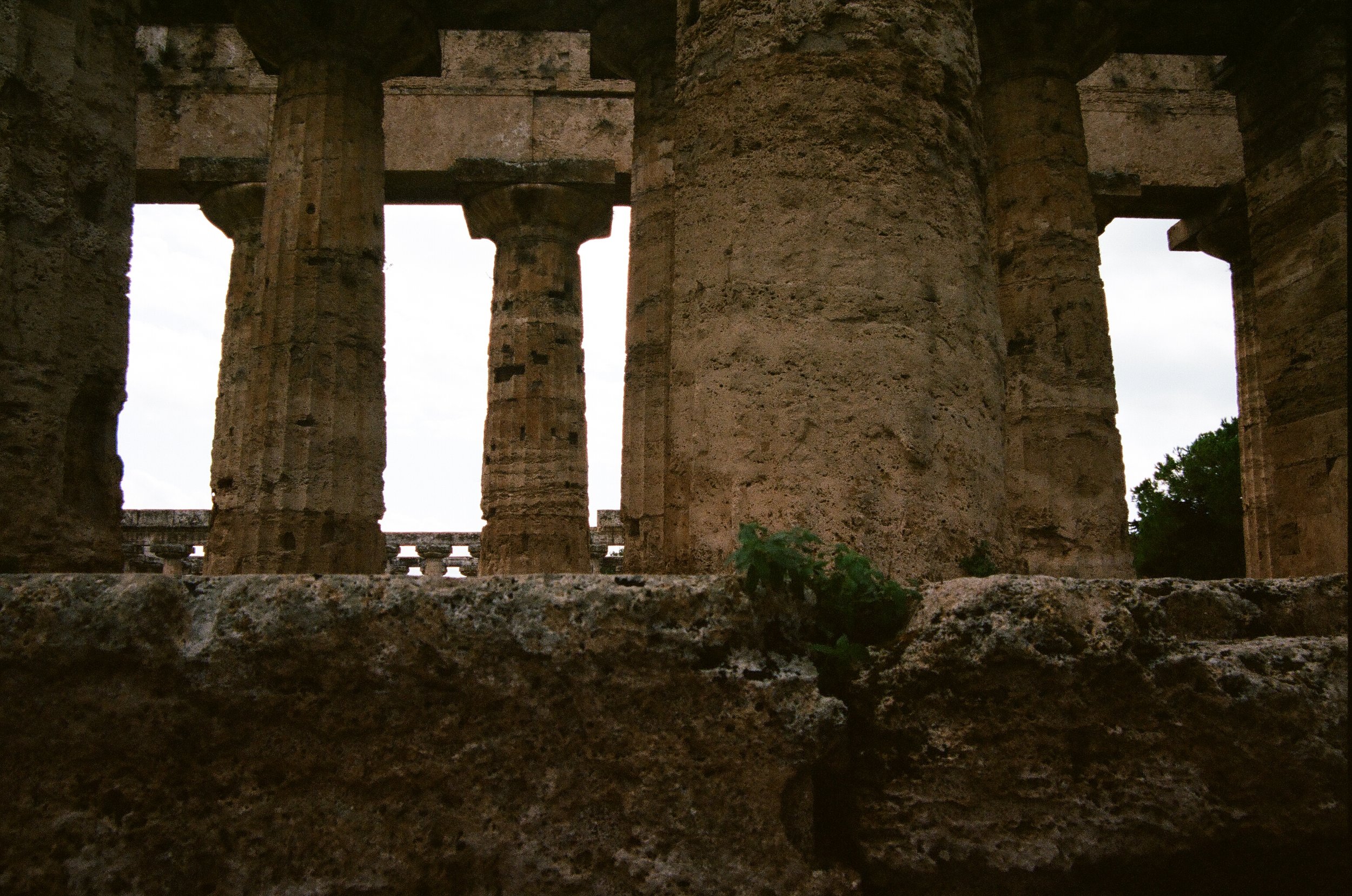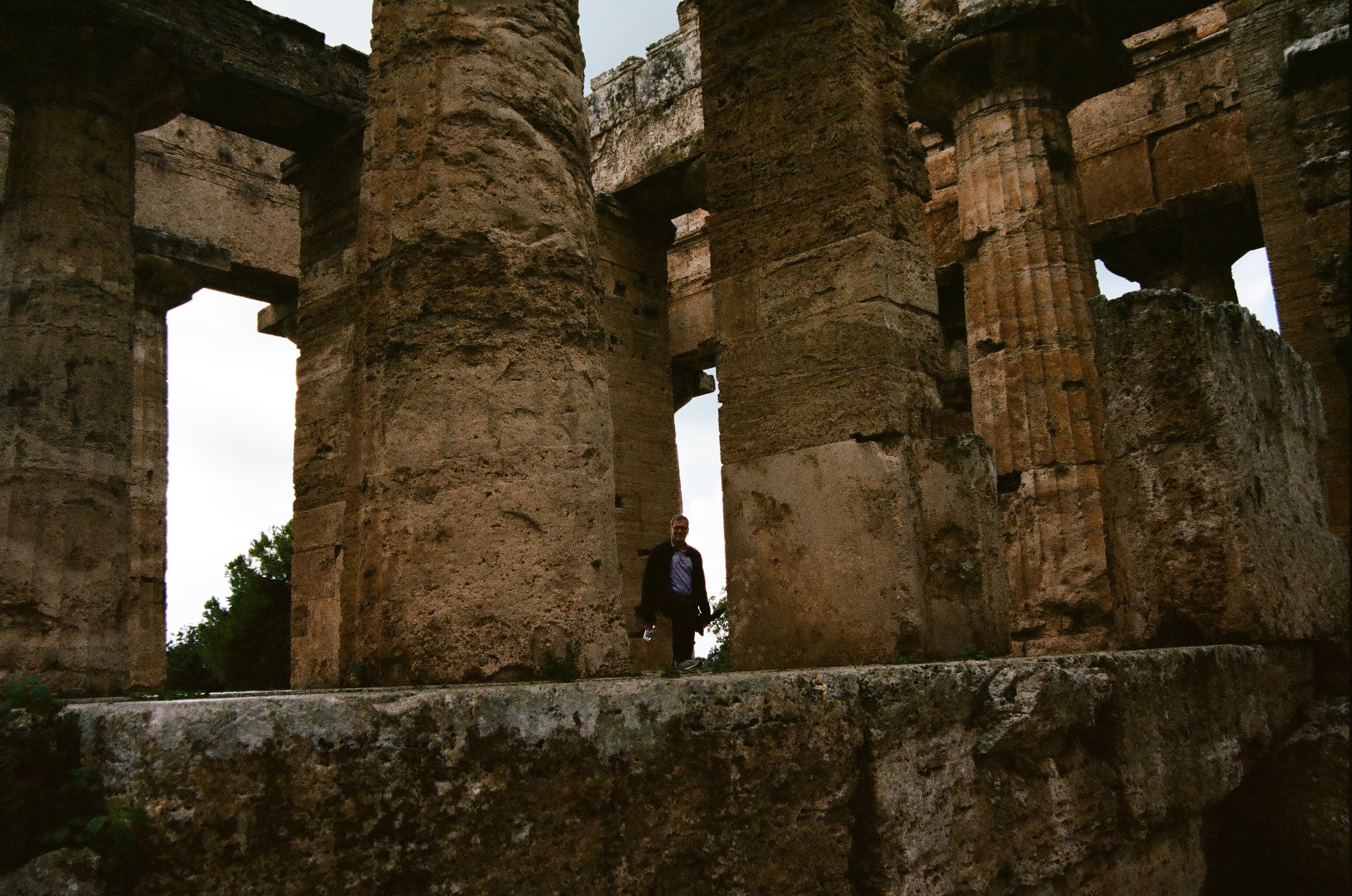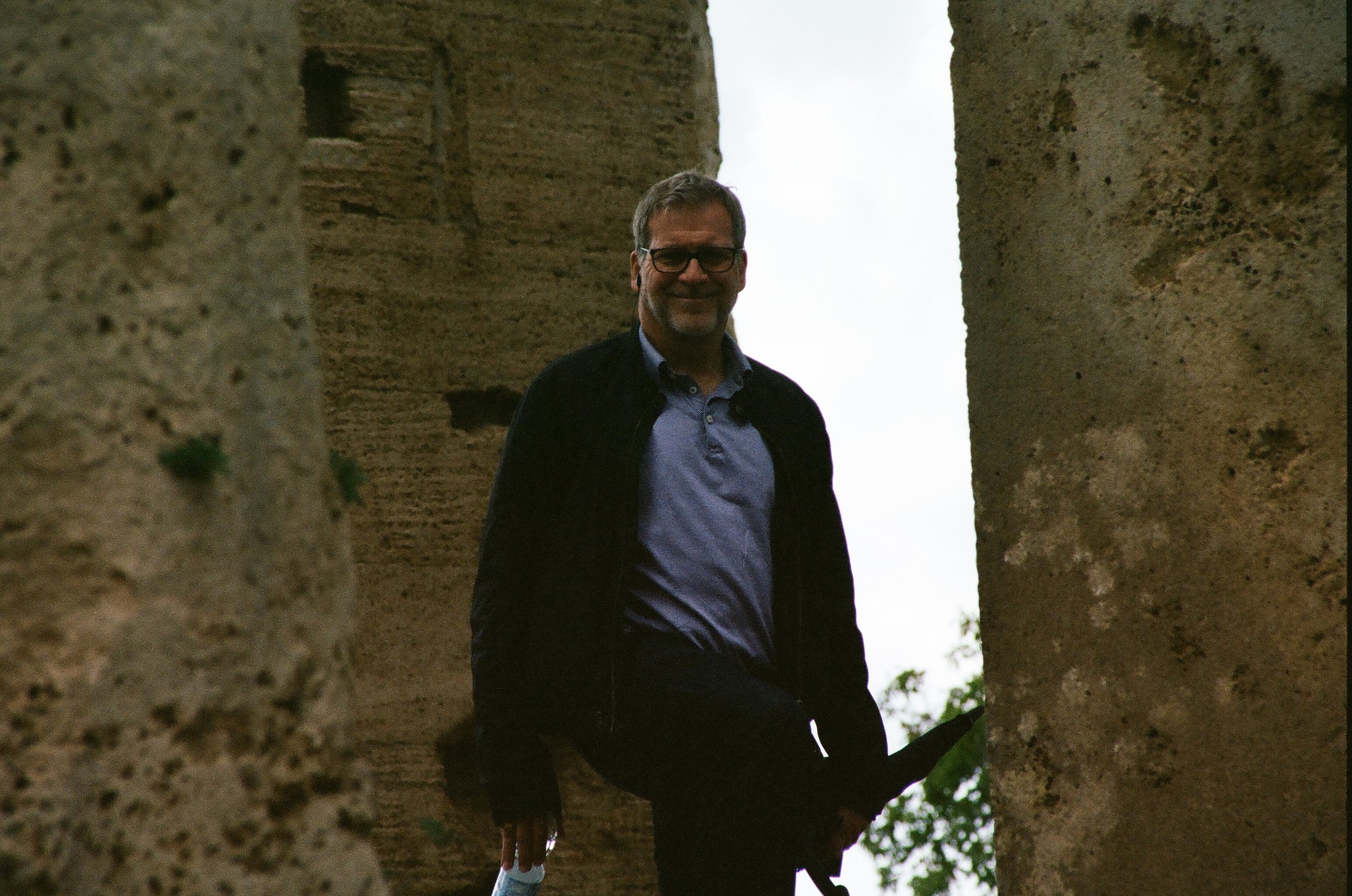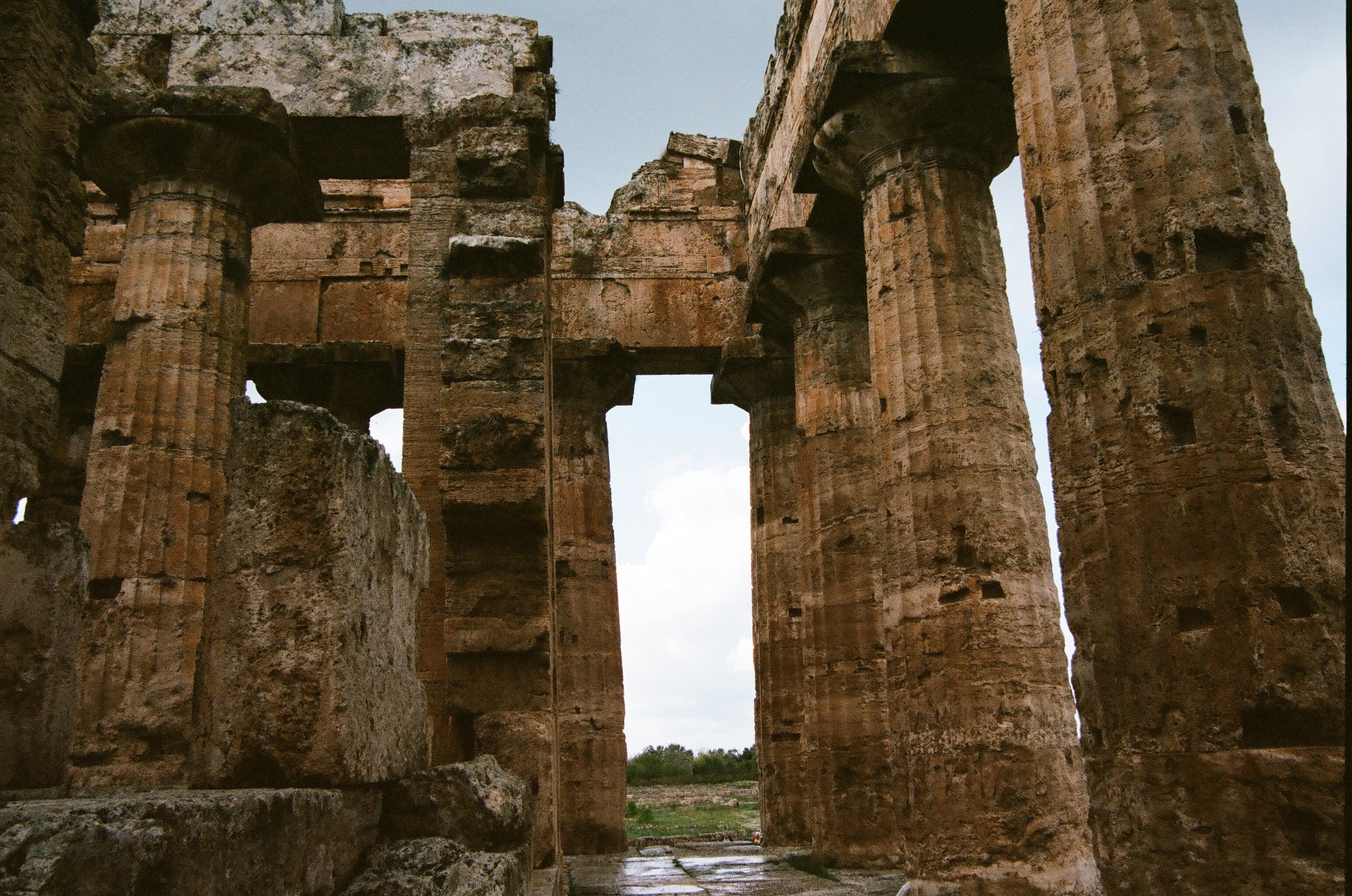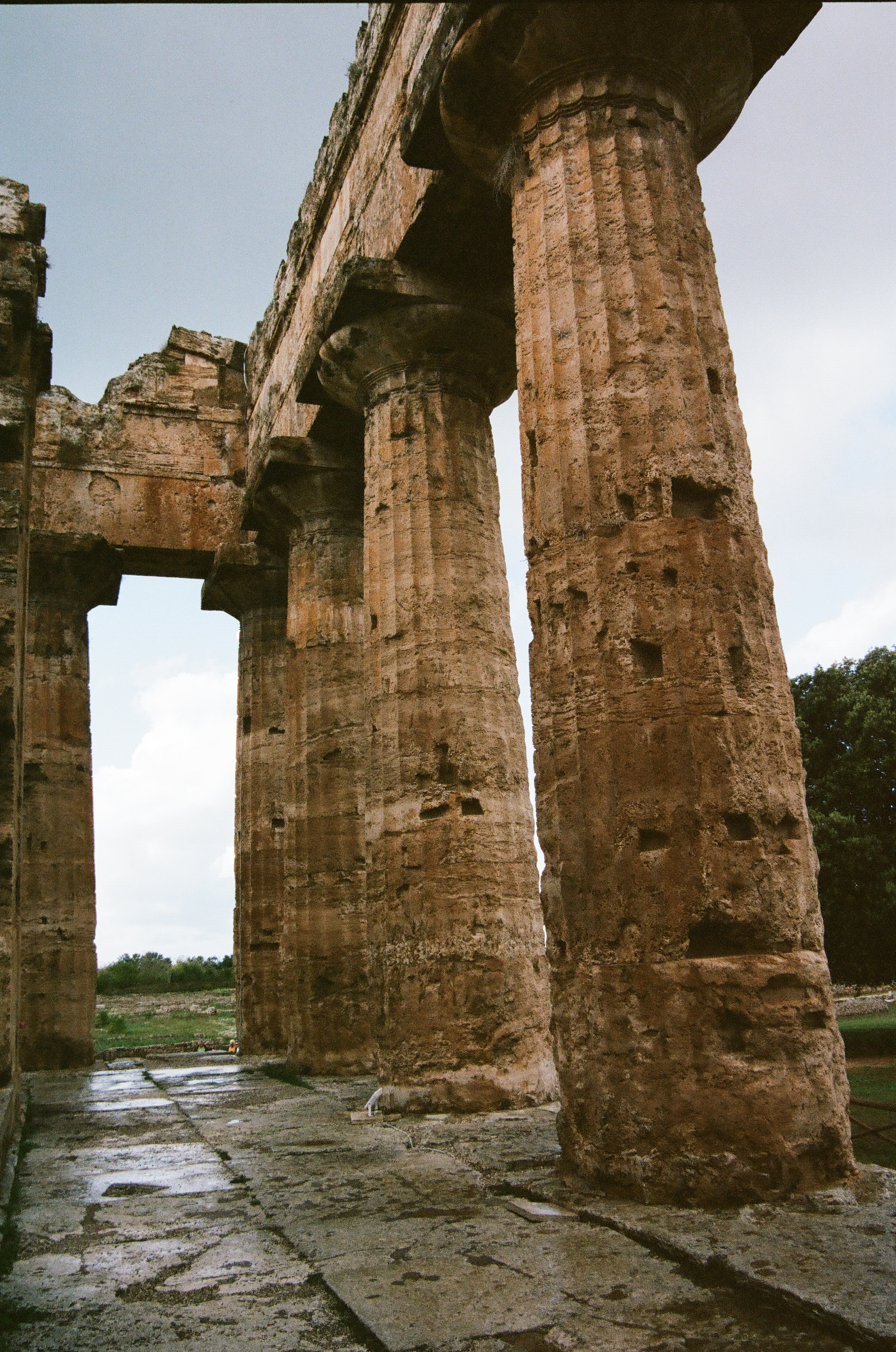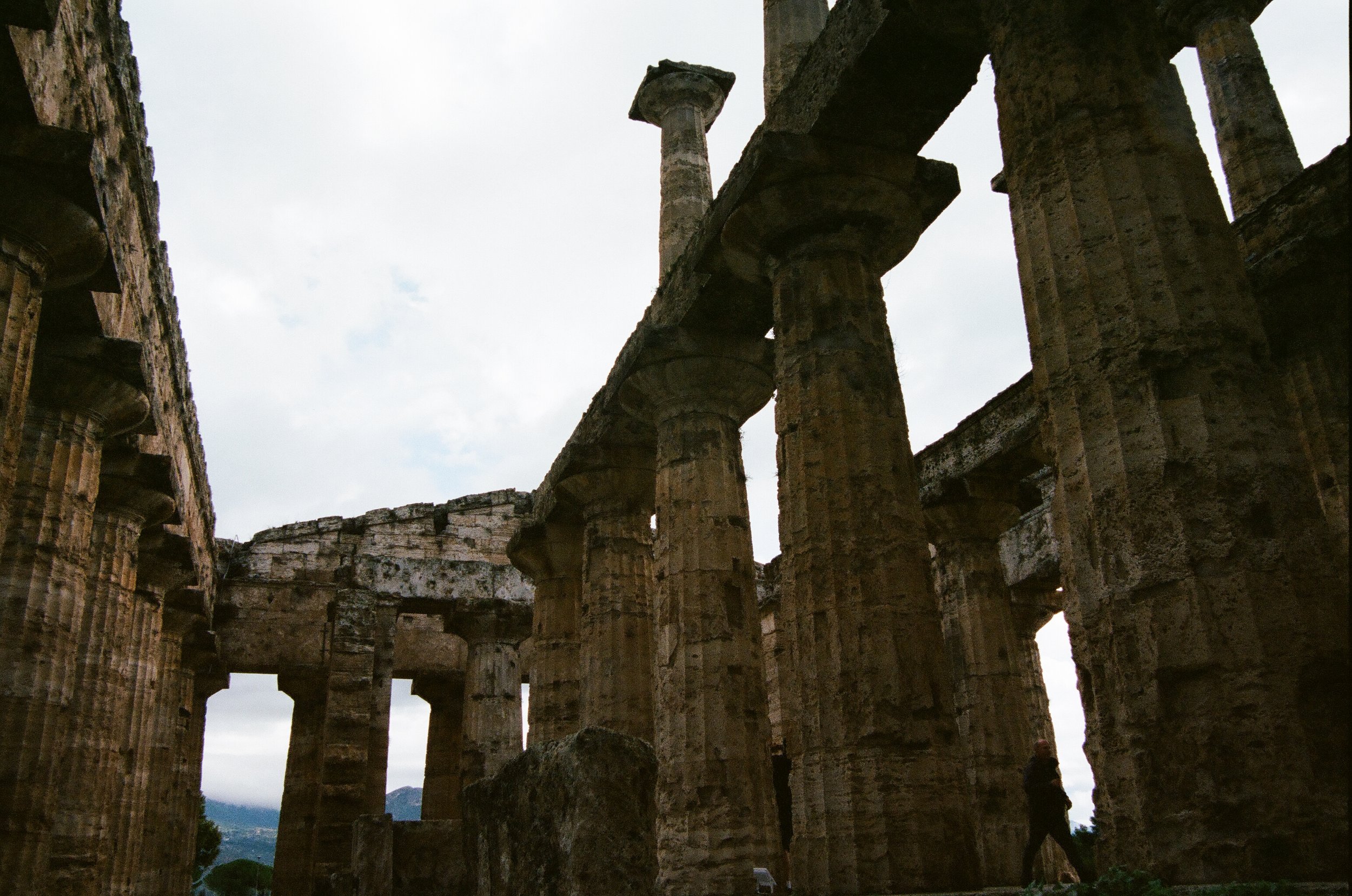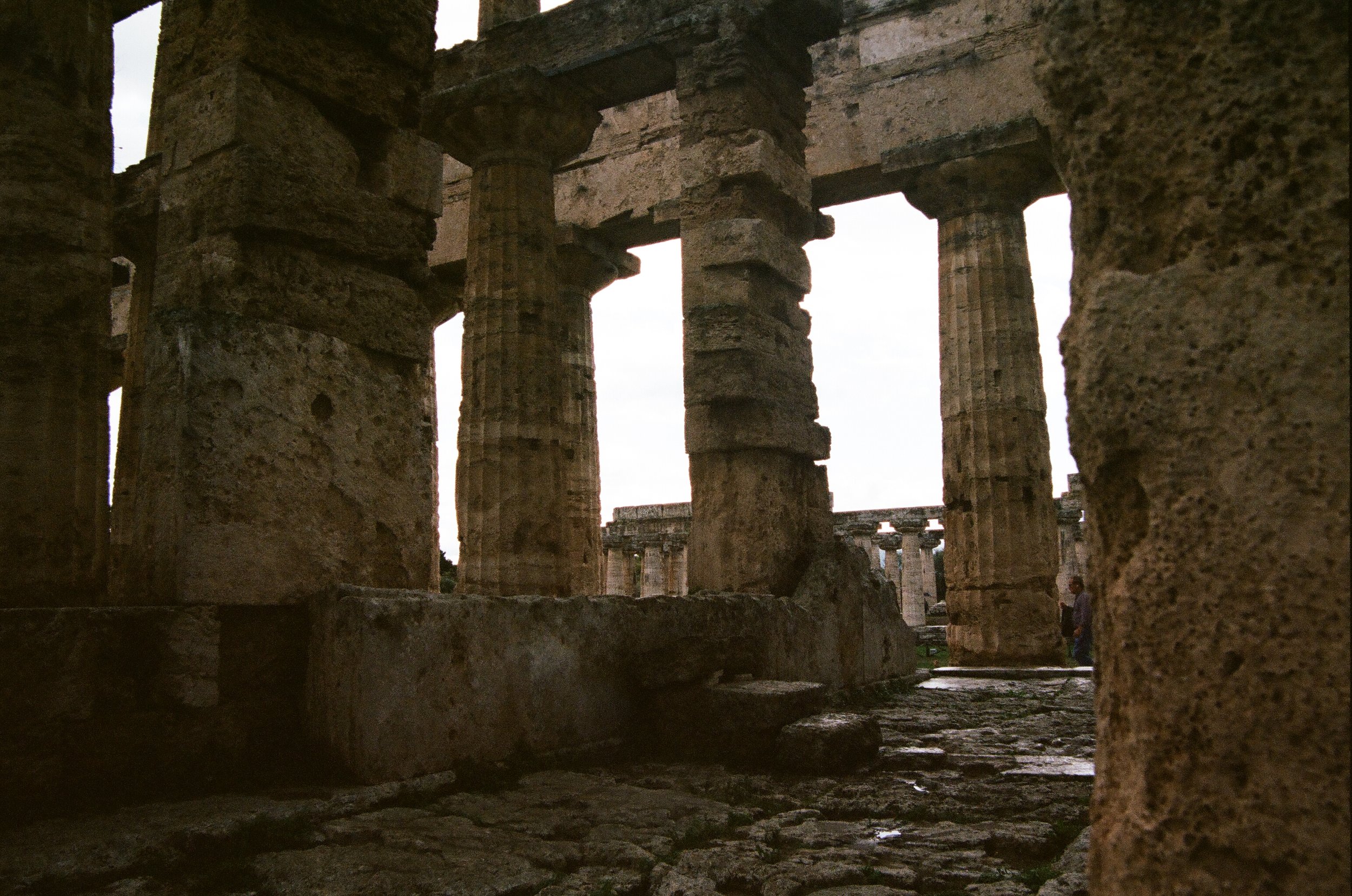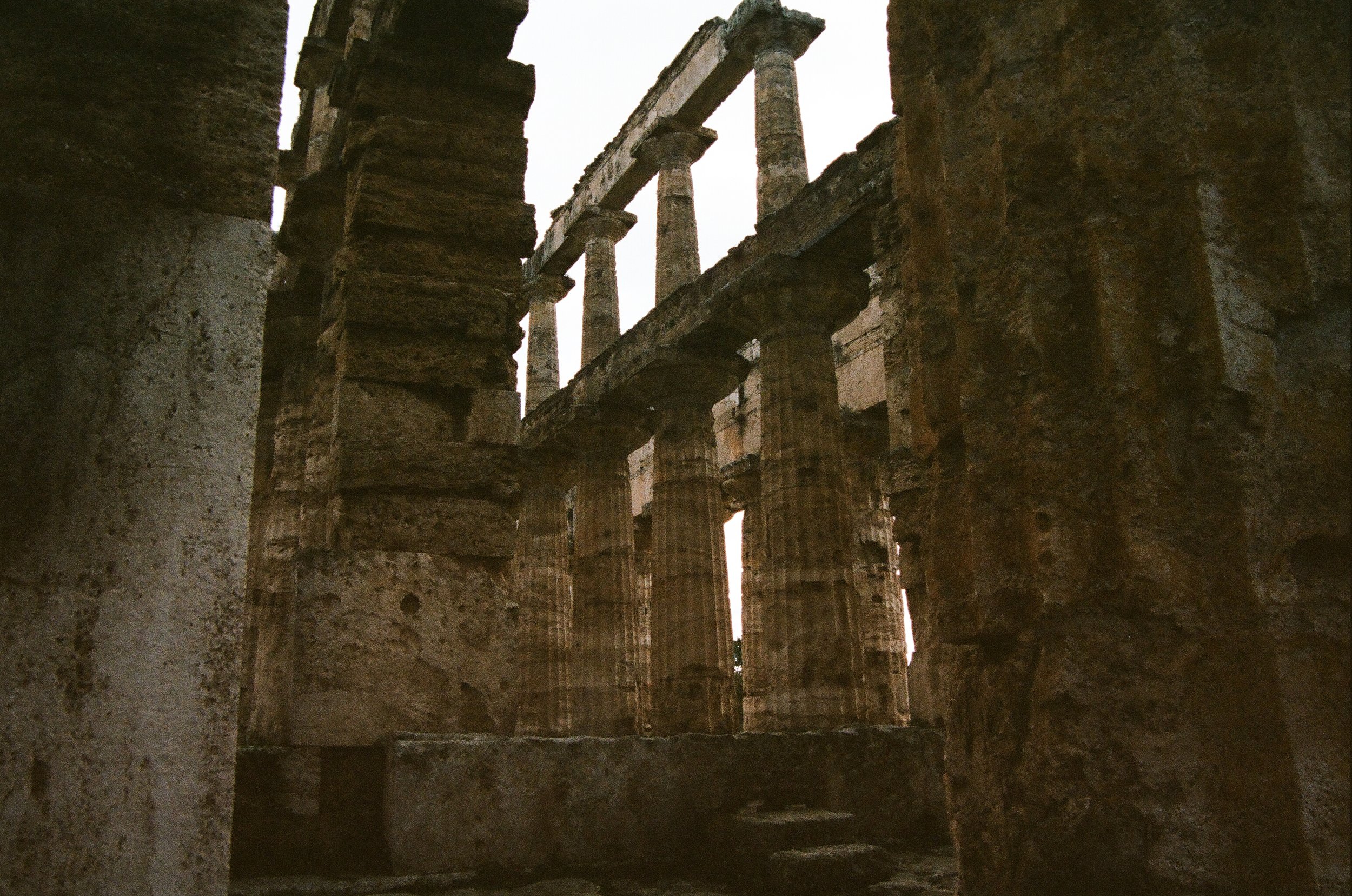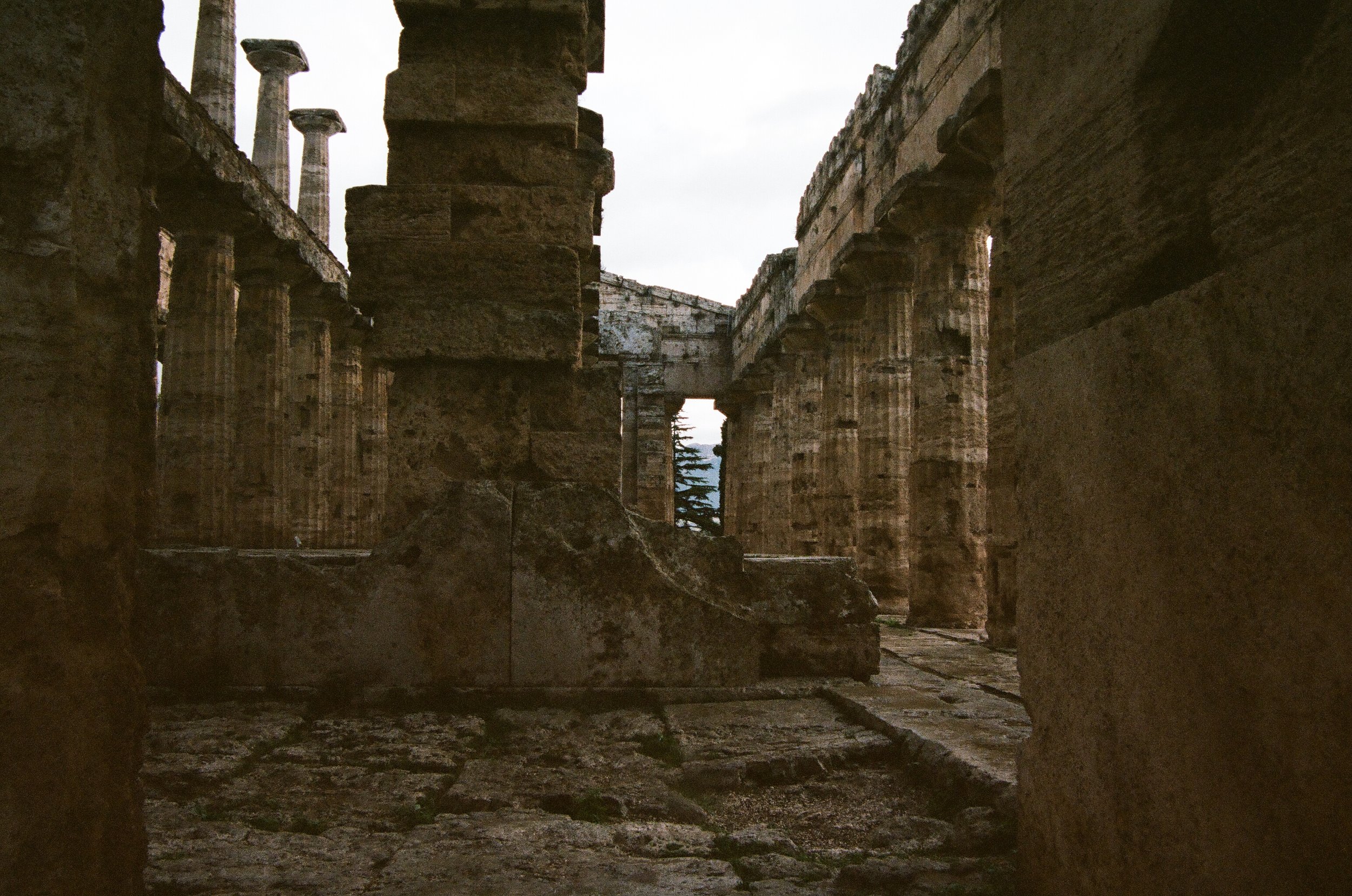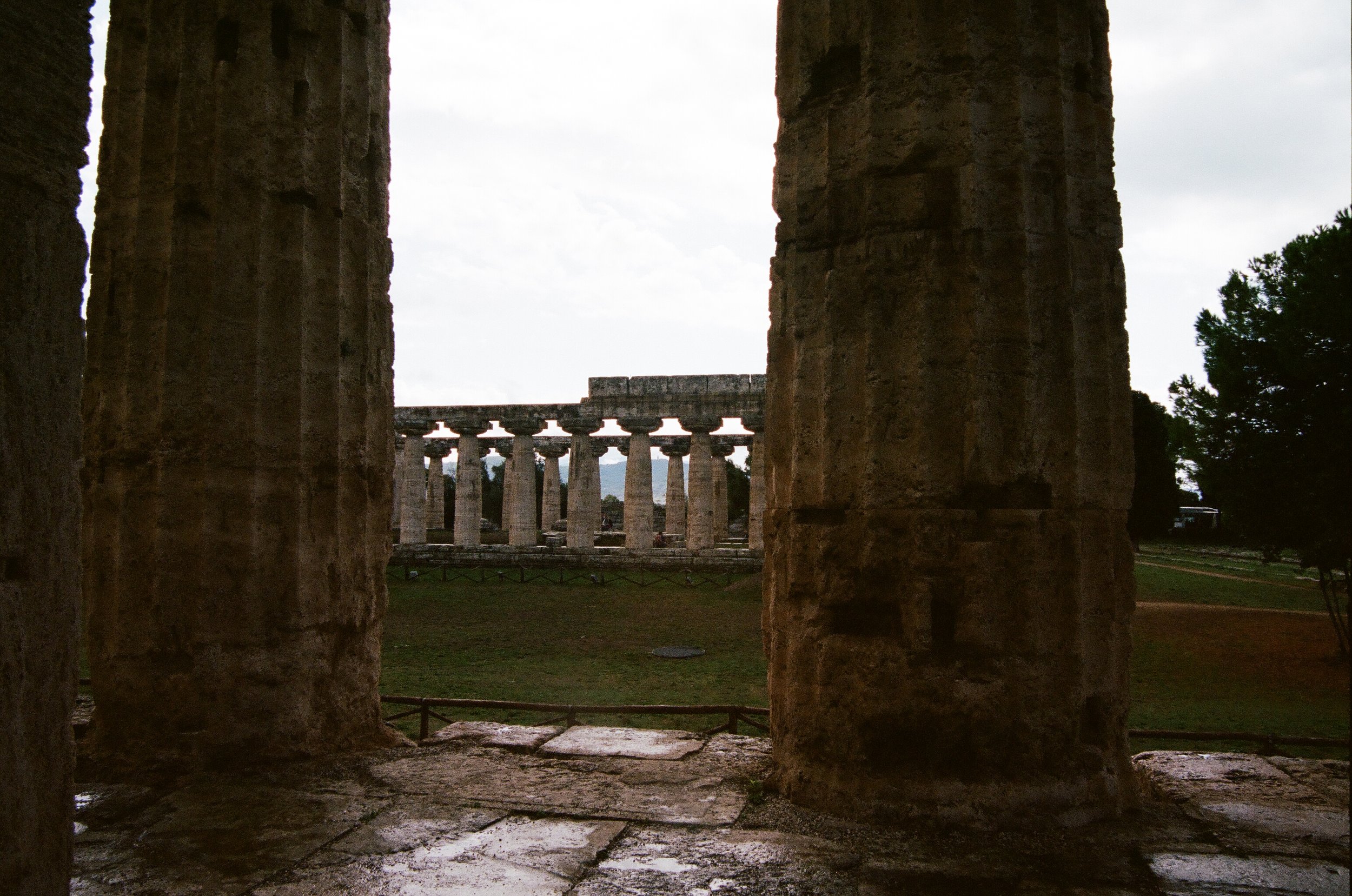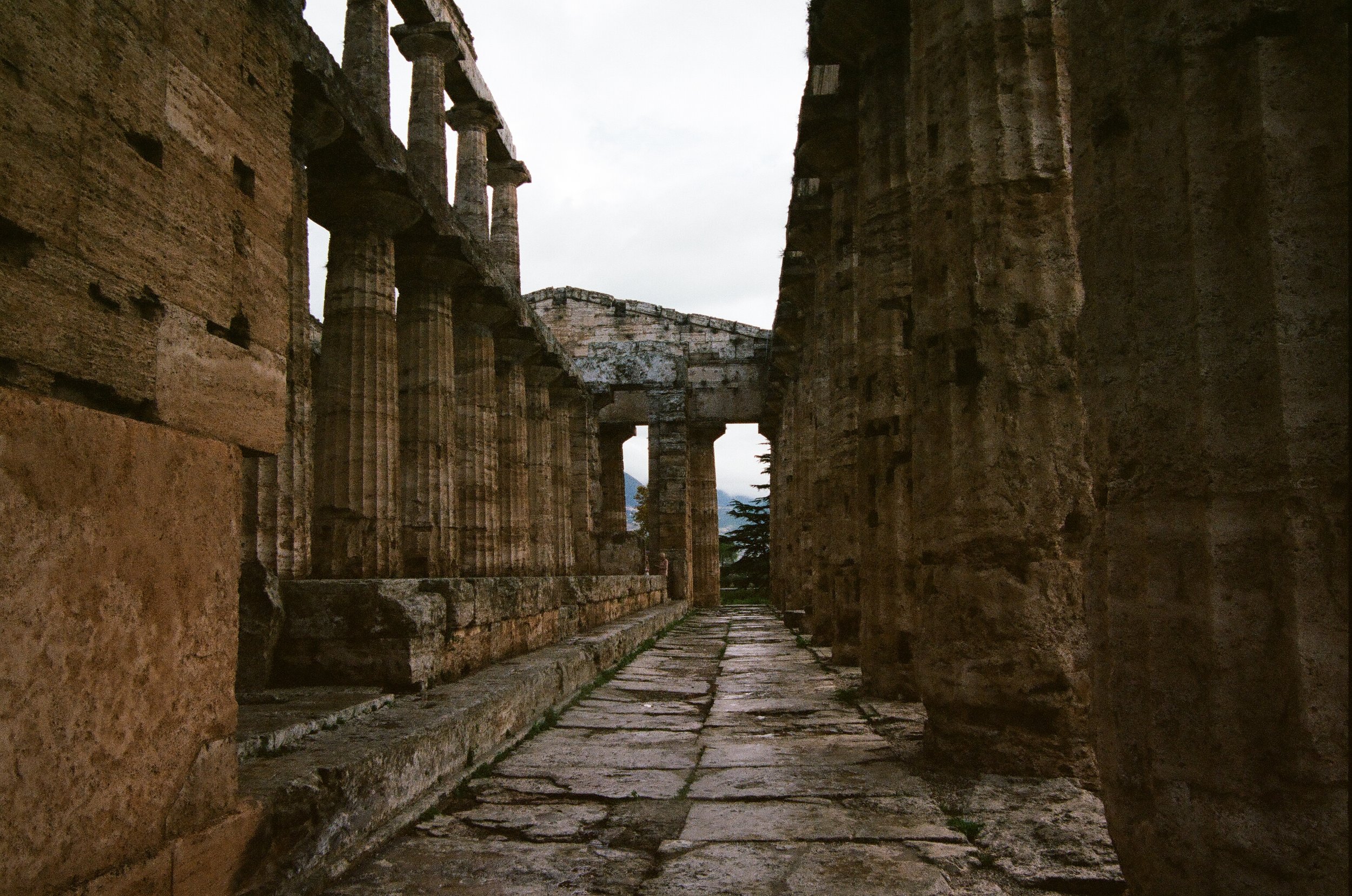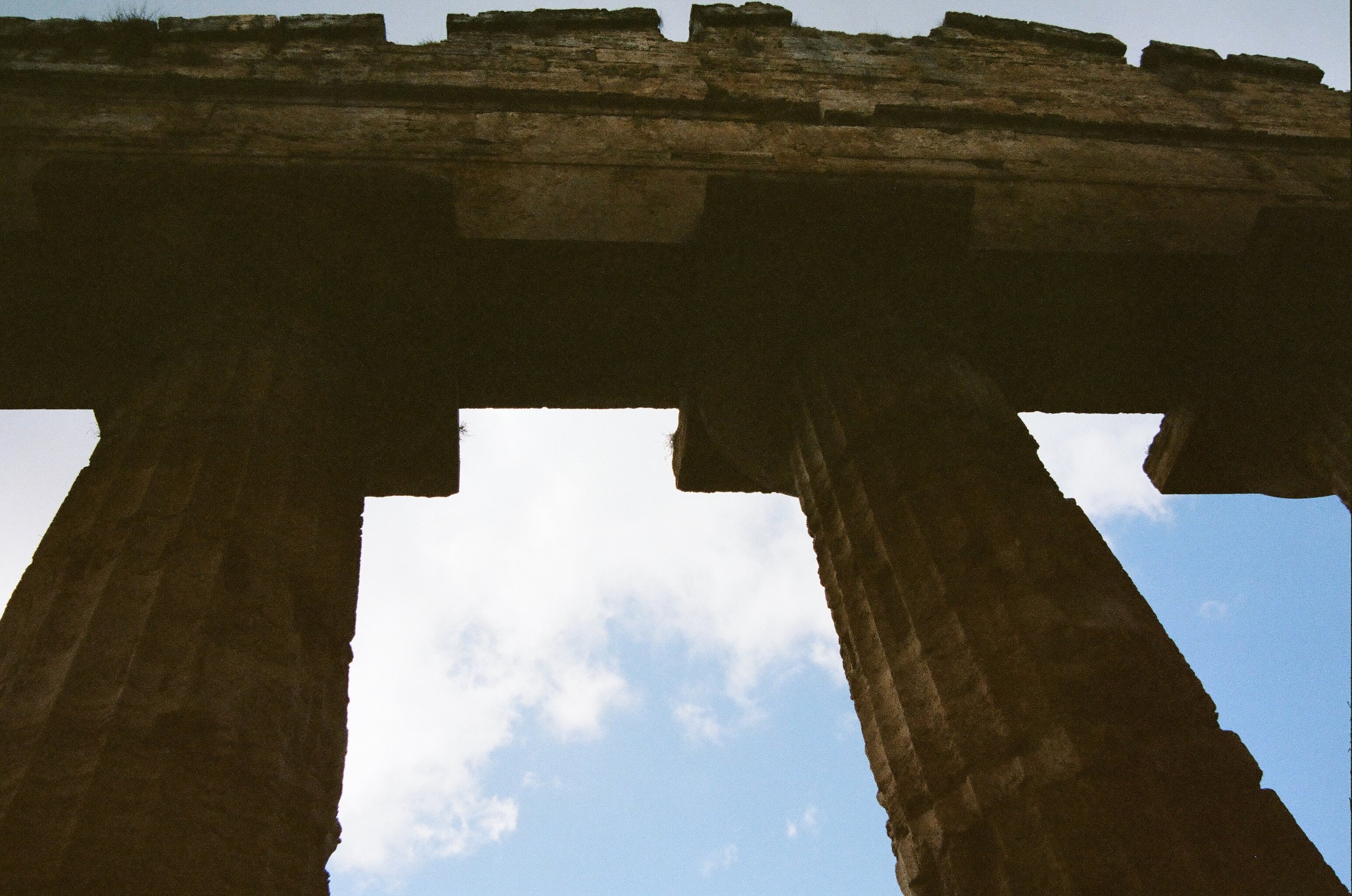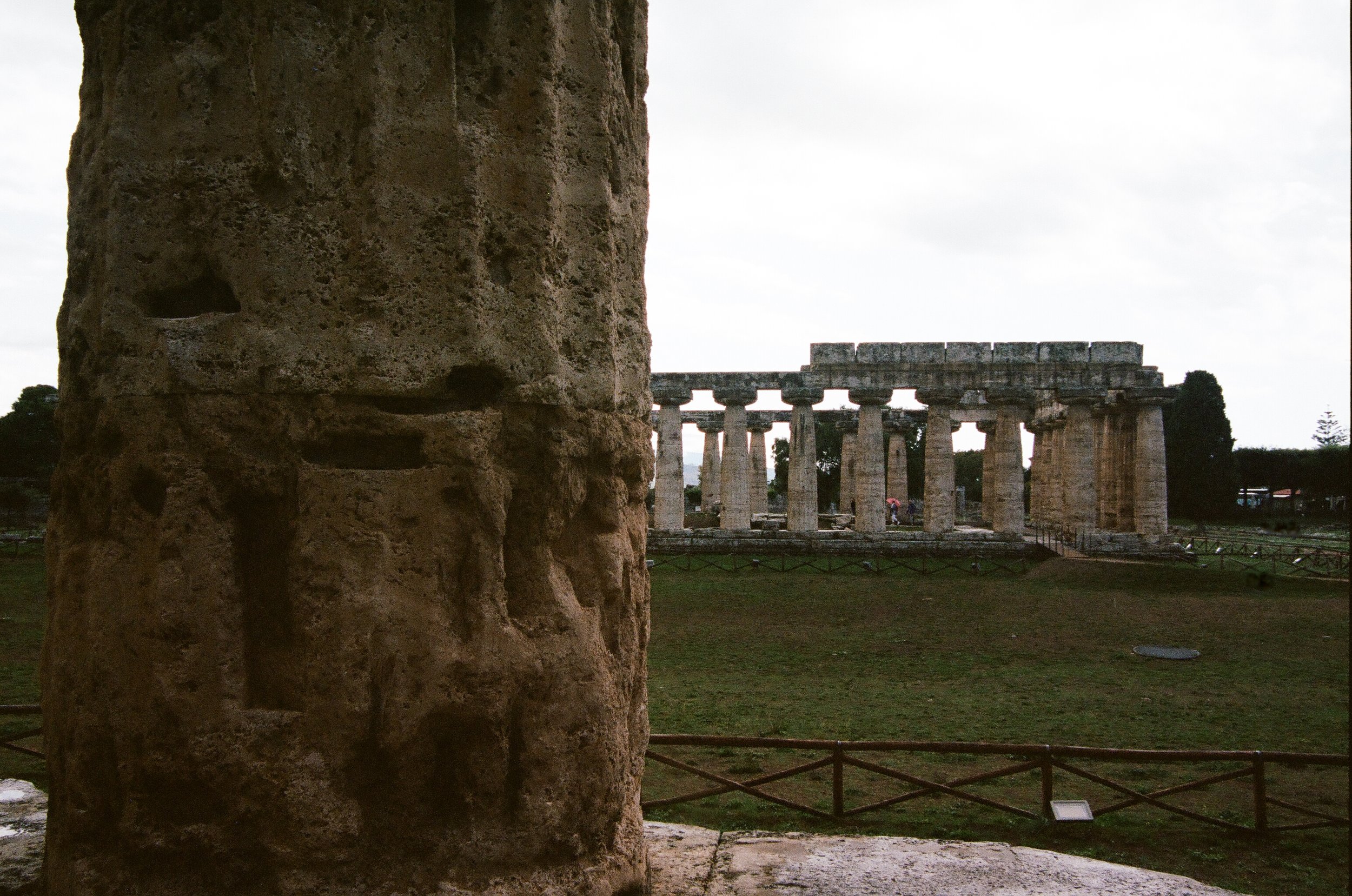The hamlet of Capaccio, found in the region of Salerno, located far down the boot in Campania, (about two hours or so from Sorrento), is a charming little town near the Greek ruins of Paestum.
There are silent stone churches with slants of light pouring into the shadows through stained glass and open windows shaped as doves and olive branches, each path of gold against black an evocation for peace in an undiscoverable darkness. Silence except for birds and echoing footsteps accompany you a foreigner in a foreign place. The solitude is universal in its unspoken language. You are welcome to sit and contemplate, or walk softly in cold corners under towering stretchs of wood and stone, somehow cradling us in its distance. A transitory connection to prayers whispered in the heart, undecipherable to human ears. How many gods have been called in how many temples on these grounds? Hera, Ceres, Athena, Poisedon, Christ, the Lord Himself, or the Madonna? Outside, a rush of sunshine, warmth on the skin, a grumbling in the stomach, a need to affirm we are still among the living. Fruit and pizza and coffee beckon across the way, and in a little shop in Capaccio we find local juicy figs floating in local honey, and figs woven together stuffed with regional almonds, in beautiful little packages we later brought home with us.
Just recently I gave Rian’s brother that last bundle we had been saving for the holidays… Rian would have wanted him to savor the taste of Italia, a place he’s never been, a place he never fell in love with as Rian and I had twenty years ago, and kept returning to. I gave it to him with Barolo and dark chocolate and champagne, I wanted him to taste a small glimpse into this magical world we had so long found ourselves enchanted with. He loved them. I thought of Rian smiling somewhere as if he could watch us somehow.
Bringing what we loved about this country is something we both so long felt driven to do. He would bring endless bags of chocolates and special Sicilian cookies for his friends at his office, and for family and close friends, after each trip back. Sometimes I would bring wines difficult to find in the states, or handmade liquers, and serve them at the holidays we hosted together for so long.
To share with others even a spark or a glimpse of the reason for our longing and our love for an otherworldy place, combined with tales of what we experienced and learned, kept us going until the next return. One day I suppose I shall return too, without him beside me as I wish, but with his ashes, with his memory, and with his energy still felt in the world, and set the remains afloat in the seas and lands he loved so deeply he broke through the mystery of Italia better than I ever could. And he took that mystery with him beyond. And here I am, as ever, in love with beauty I cannot dissect or take into me, I can only love from afar… as if in a dream. Perhaps life is the dream, and death a waking up? A return to the fold of everything seen and felt here through a veil.
There is that charming church write about above in the heart of the town of Salerno, and also a large cloistered monastery and cathedral, long with a fascinating museum of Clasiccal Antiquity, mostly containing the remnants (some vey much intact) of Paestum, a Greek colony in Italia pre-dating the founding of Rome. It is located on the coast of the Tyrrhenian Sea in Magna Graecia (southern Italy). The ruins of Paestum are famous for their three ancient Greek temples in the Doric order, dating from about 600 to 450 BC. It was named Poseidonia (Ancient Greek: Ποσειδωνία) but was was eventually conquered by the local Lucanians and later the Romans. The Lucanians renamed it to Paistos and the Romans gave the city its current name.
The Paestum, or “Pesto” temples are some of the most intact ruins on the mainland of Italia, and their being Greek in nature only lends to their charm and mystery. The pastoral setting of Paestum leads one to get a feeling for the atmosphere of another era, millennia ago. Everything is beautiful in the town and most especially in the large park where the Grecian marble stands against all odds of weather, war, and time. One can find shade under tall olive trees and smell hints of lemon trees in the air as they walk among the dead and the stone of a culture and a people who no longer exist, and yet we feel some mysterious connection to, even to this day.
TO VISIT PAESTUM (with stops along the way in the city centers)
click here: http://www.museopaestum.beniculturali.it/i-templi/?lang=en
PAESTUM IS LOCATED AT Via Magna Graecia, 918, 84047 Paestum SA, Italy
Opened: 1952
Hours: Opens 8:30AM (VARIES) to sunset, with special evening extended openings to view the ruins at night.
Province: Province of Salerno
Phone: +39 0828 811023
